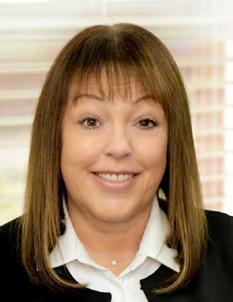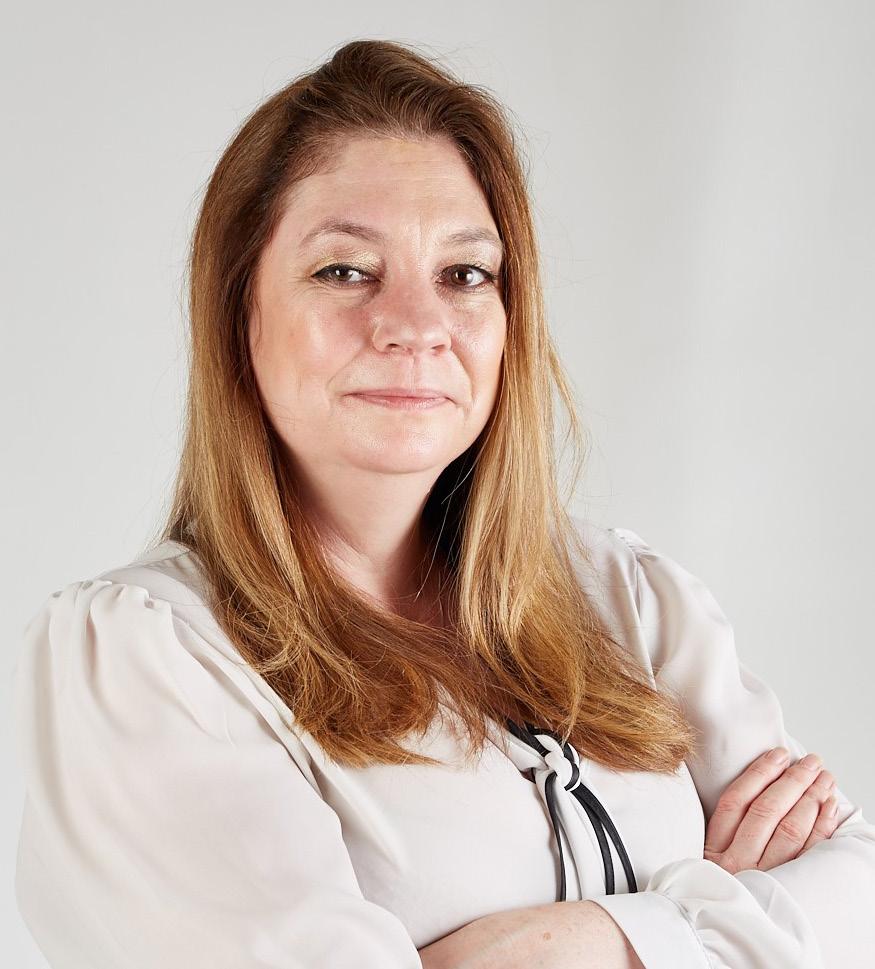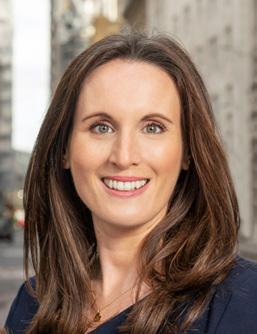



Champion of the Mortgage Professional www.mortgageintroducer.com SUMMER 2024 SIDNEY WAGER ‘I’ve got a real desire to leave things in a better place than I found them’ Industry Icon SPECIAL FEATURE SPONSORED BY Turn to pages 21 - 25 INSIDE: TOP BROKERS 2024 Rewarding the best in the industry



MORTGAGE INTRODUCER MARCH 2024 www.mortgageintroducer.com OUR HOME INSURANCE For intermediary use only. Paymentshield and the Shield logo are registered trademarks of Paymentshield Limited. Authorised and regulated by the Financial Conduct Authority. © Paymentshield Limited 05/24 00308. Protecting
Home Insurance is bubbling over with features to support your clients. Plus, getting an insurance quote has never been smoother,
you decide to get a quote yourself
refer your clients to our experienced team.
way, you have full transparency
process. paymentshield.co.uk/advisers FINDOUT MOR E
your clients Our
whether
or
Either
of the
Managing editor
Paul Lucas paul.lucas@keymedia.com
Editor Simon Meadows simon.meadows@keymedia.com
Senior news writer
Rommel Lontayao rommel.lontayao@keymedia.com
Commercial director Matt Bond matt.bond@keymedia.com
Campaign coordinator Raniella Alonzo raniella.alonzo@keymedia.com
Vice president, sales Chris Anderson
Vice president, production Monica Lalisan
Production coordinators
Kat Guzman, Loiza Razon
Production editors
Roslyn Meredith, Allison Ingusan
Art director Marla Morelos
Designer Khaye Cortez
President, Tim Duce Director, people and culture, Julia Bookallil Chief information officer, Colin Chan Chief revenue officer, Dane Taylor CEO, Mike Shipley COO, George Walmsley

KM Business Information UK Ltd
Signature Tower 42, 25 Old Broad Street Tower 42, London EC2N 1HN www.keymedia.com
UK ∙ Canada ∙ Australia ∙ USA ∙ NZ ∙ Philippines
Mortgage Introducer is part of an international family of B2B publications, websites and events for the mortgage industry
CANADIAN MORTGAGE PROFESSIONAL cmpadvertise@keymedia.com
MORTGAGE PROFESSIONAL AMERICA mpaadvertise@keymedia.com
MORTGAGE PROFESSIONAL AUSTRALIA claire.tan@keymedia.com
AUSTRALIAN BROKER simon.kerslake@keymedia.com
NZ ADVISER alex.knowles@keymedia.com
Copyright is reserved throughout. No part of this publication can be reproduced in whole or part without the express permission of the editor. Contributions are invited, but copies of work should be kept, as the magazine can accept no responsibility for loss.
Evolution is all around

Evolution isn’t just the stuff of dusty old tomes written by Charles Darwin back in the m id- 19t h century. It’s happening in the here and now, all around us and within us, as we adapt and develop and change according to our surroundings and experiences.
Change is inevitable, of course, especially in the rapidly evolving mortgage market, and arguably at no time more so than in the past few years, which have seen huge technological advancements, greater regulation and the introduction of C onsumer D uty, with all the adjustments these have brought. And that’s not to mention a seemingly unending conveyer belt of rates and criteria revisions as the industry has responded to an economy that ’ s been anything but stable.
We’ve seen changes, too, in the way the mortgage sector addresses diversity, equity and inclusion, developing policies and processes to encourage the representation and participation of a broader spectrum of the people who make up our society.
Barclays’ Sidney Wager is an influential thought leader in this area, and in a compelling interview for this edition of Mortgage Introducer, he takes us on a journey through his life and career – his own personal evolution from studious schoolboy to becoming the lender’s mortgage intermediary market development director . “You have to be motivated to want to see evolution,” Wager explains in a story you won’t want to miss.
Elsewhere in the magazine, we profile Natalie H a nd , who’s e njoyed an inspiring evolution of her own, from professional photographer and casino croupier to mortgage and protection adviser. We examine how the new build market is developing, too – seeing a resurgence of interest as a driving force behind the recovery of the housing market.
And we close this edition, as always, with My First Deal, our fascinating feature in which a broker looks back to the start of their career and reflects, in their own words, on how they have grown and changed during their time in the mortgage industry. This time it’s the turn of Sarah-Jane Ashdown, who, curiously, started out wanting to become a psychiatrist, before her career took an unexpected turn…
Enjoy the magazine – and the changes you make this summer!
Simon Meadows
www.mortgageintroducer.com SUMMER 2024 MORTGAGE INTRODUCER EDITORIAL COMMENT
1





www.mortgageintroducer.com MAGAZINE WHAT’S INSIDE Contents 4 Market review 28 Advice review 38 Buy-to-let review 41 General insurance review 42 Protection review 44 Recruitment review 10 Industry Icon The evolution of Barclays’ Sidney Wager 14 Features Female leaders on the industry’s journey towards gender equality 15 Special Report Mortgage Introducer reveals the UK’s Top Brokers in 2024 21 Roundtable Industry experts discuss the dynamic high-net-worth market 27 Features Top tips for new young brokers 32 Broker Focus From photographer and croupier to broker: meet Natalie Hand 34 Sector Focus Resurgence and innovation in the new build market 45 Features Does housing affordability need a rethink? 46 Features A broker’s path from trading floor to Islamic finance 47 Features Virgin Money’s Craig Calder on the importance of staying relevant 48 My First Deal Sarah-Jane Ashdown tells her story 2 SPOTLIGHT ON UK’S BEST BROKERS 15 21 ROUNDTABLE: HIGH-NET-WORTH MARKET 34 10 INDUSTRY ICON SIDNEY WAGER NEW BUILD SECTOR IN FOCUS Cover photo: Barclays director Sidney Wager
www.mortgageintroducer.com SUMMER 2024 MORTGAGE INTRODUCER
Increasingly complex market drives uplift in specialist lending
 BDonna Wells Managing director, Envelop
BDonna Wells Managing director, Envelop
y the time you read this article, we will be close to drawing the curtain on H1 2024 and looking forward to H2.
Generally speaking, H1 has lived up to a rising number of cautiously optimistic expectations that emerged towards the back end of 2024, even exceeded them at times. This is largely due to slowly improving lending conditions, greater economic stability, falling inflationary pressures and progressively rising consumer confidence. Or, at the very least, a more realistic and pragmatic appreciation of the current interest rate environment, especially among those property professionals who are well positioned to take advantage of property-related opportunities as they arise.
Inevitably, during this period the specialist mortgage market has been heavily leaned on to provide an array of solutions to meet complex borrowing requirements. One of which, bridging finance, continues to see some sustained uplift across the intermediary market.
A GROWING RELIANCE ON BRIDGING FINANCE
This was evident in the latest Castle Trust Bank Pulse survey, which showed that over two thirds (68 per cent) of brokers expect to arrange more bridging loans in 2024 than 2023. The research found that a quarter (25 per cent) of brokers expect a ‘good increase’ in bridging business in 2024, with 43 per cent believing it will be ‘slightly higher’.
One in five brokers (21 per cent) expect demand to remain the same,
while only 11 per cent are concerned that bridging business levels may fall.
This positive outlook reflects continued growth in demand for bridging finance. According to the research, 42 per cent of brokers said they had arranged more bridging loans in 2023 than in the previous year, contrasting with 38 per cent who said they had arranged fewer bridging loans for first-time investors in the past 12 months – indicating that experienced property investors are driving the demand for bridging loans. These figures help demonstrate the growing reliance on bridging finance, a trend we expect to continue in H2 2024 as mainstream lending boundaries continue to constrict the scope and scale of a host of propertyrelated transactions. Demand will be particularly high when speed is of the essence for clients looking to secure a purchase or raise funds to maximise portfolio opportunities in what remains a fast-moving market for well-priced properties.
SUSTAINED SECOND CHARGE MARKET UPLIFT
Another growth area was the second charge mortgage market, which, according to recent figures from the Finance & Leasing Association, returned a strong performance in the first quarter of 2024, with new business growth reported in each month of the quarter.
In Q1 2024 overall, new business increased in value by 14 per cent and in volume by eight per cent compared to Q1 2023. The distribution of new business by purpose of loan in Q1 2024 showed that the proportion of new agreements that were either solely or in part for the consolidation of existing loans held relatively steady at 82 per cent compared to the same quarter in 2023.
Again, it’s great to see sustained uplift in this important area of specialist lending. This is largely due to a more flexible approach to affordability and less rigid income multiples – an approach that may allow clients access to more equity or enable them to raise capital and keep their current mortgage at a lower rate, which is increasingly important given the discussion around the base rate staying higher for longer.
MITIGATING RISING BTL COSTS
Focusing on an ever-evolving buy-to-let sector, the latest Q1 2024 Landlord Trends report – carried out by Pegasus Insight on behalf of Foundation Home Loans – revealed that buy-to-let landlords have made a raft of financial changes over the last 18 months to mitigate the rising costs of running a rental property.
When asked to identify the changes made (with multiple responses allowed), 30 per cent said they had renegotiated their mortgage with their existing lender, 29 per cent had increased rents, 25 per cent had cancelled plans to purchase additional property, 22 per cent had remortgaged to another lender, 15 per cent had paid part of their monthly mortgage payment out of non-rental income like savings, and 15 per cent had sold a property to reduce their mortgage outgoings.
This data highlights the need for further support and advice for even the most experienced landlords in such a complex lending landscape. For proactive advisers, there is no time like the present to reach out to those clients to demonstrate their value, as some landlords may have had problems keeping up payments and maintaining a strong credit profile over the past 12 to 18 months. As a specialist packager, we are always here to offer that additional layer of expertise to help you to help them. M I
MORTGAGE INTRODUCER SUMMER 2024 www.mortgageintroducer.com 4 REVIEW MARKET
Look beyond specialist lenders for your near prime clients

Rising prices and bills have had a real impact on the financial health of many households over the last few years.
Research from the Money and Pensions Service found that last year around 16 million people missed a bill payment. For two million of those, this was the first time they had missed a payment, a perfect indication of how budgets have struggled under the weight of rising outgoings.
For some of those households, those missed payments will be evidence of more long-standing financial problems, but not for all. Instead, for a proportion of those who missed a payment, it was a blip; the exception rather than the rule.Yet that payment hiccup can have a big impact on their borrowing prospects for a long time, particularly given the attitude many lenders have towards near prime clients.
LIMITED OPTIONS
As brokers know only too well, regular banks are rarely interested in supporting borrowers who have had the odd payment issue in the past. The focus on credit scores can mean that borrowers with a blip on their record are excluded by many banks, leaving brokers to focus their efforts on the specialist market.
However, it’s worth remembering that it’s not solely specialists who are active in this market. What’s crucial is working with lenders who can look beyond the black and white of a credit score and instead focus on getting a broader picture of the borrower’s circumstances.
DELIVERING FOR CUSTOMERS WITH SMALLER DEPOSITS
A further challenge that near prime borrowers often face is the LTV on offer. It’s common for lenders to be far more restrictive in what they offer these clients, demanding equity stakes of 25% or more.
Given the way that property prices have increased in recent years, even with the various economic challenges we have faced as a country, this can be seriously limiting for near prime borrowers.
If a lender wants to truly support this borrower type, then they need to reflect this and provide options for borrowers who don’t have such a substantial deposit. That’s why Atom bank has ensured that our near prime range is available all the way up to 85% LTV.
SUPPORTING CLIENTS FOR THE LONG TERM
The best brokers want to retain their clients for a long period, realising that their advice can help the borrower into a stronger financial position for years to come. It’s about not just delivering the right option for today but identifying the lenders and products that can work for the client over a longer period.
One of the downsides of focusing on specialist lenders with near prime clients is that they are not necessarily going to be an option once circumstances improve. If the payment blip really was a short-term issue, then the borrower would not want to be on a near prime product for any longer than is truly required. Specialists might not be able to reward this improvement with a more competitive prime rate in the same way a mainstream lender can.
That’s an issue we have set out to address at Atom bank, closely monitoring near prime clients throughout the course of the loan to ensure that these borrowers have the

support they need. But when they come to the end of their initial fixed rate term, should their circumstances have improved, then we are able to offer them prime terms.
DOING MORE FOR BORROWERS WHO NEED SUPPORT
Prime borrowers have no shortage of options. Brokers will be hearing daily from lenders that are looking to attract clients with a flawless payment history. But brokers will also know that far more of their clients now fall outside of the prime category, having experienced a one-off payment issue.
More lenders need to step up to support such borrowers, providing more options at higher LTVs, as well as a path to prime products when their circumstances improve. It’s the right thing to do and will mean a far healthier housing market in the future. M I
www.mortgageintroducer.com SUMMER 2024 MORTGAGE INTRODUCER 5 REVIEW MARKET
Richard Harrison Head of mortgages, Atom bank
A payment hiccup can have a long-lasting impact on a customer’s borrowing prospects
Financing the deposit: Innovative products helping first-time buyers
 OAshley Pearson Head of intermediaries, Loughborough Building Society
OAshley Pearson Head of intermediaries, Loughborough Building Society
ne of the major obstacles facing first-time buyers is trying to save a deposit to buy a home. Higher interest rates, stagnant salary growth and rising living costs mean this has become even more of a challenge in recent years, with the average FTB taking up to 10 years to save for a deposit, according to Generation Rent.
Tackling these challenges has become a key priority for the majority of lenders in the mortgage market, with many seeking out ways to develop new and innovative product solutions designed to help FTBs who can afford to take out a mortgage but may struggle to save enough for a deposit.
Products that offer FTBs an alternative way of financing a traditional deposit are becoming increasingly popular in the mortgage market, whether this is achieved through a higher LTV or by drawing on the combined wealth, income or joint borrowing power of FTBs and other family members.
Loughborough Building Society’s family deposit mortgage, for example, has continued to see heightened demand in recent years as it enables FTBs to take out a 100 per cent LTV product, while another family member (typically parents) guarantees a deposit of up to 20 per cent of the purchase price.
This can be done by placing a collateral charge against the depositor’s own property or as a cash lump sum into a savings account. In both these scenarios, the deposit is released after seven years or sooner if there is enough

equity in the property when it’s time to remortgage.
Another option for financing a deposit is available through a Joint Borrower Sole Proprietor Deposit Guarantee mortgage. This works in a similar way to the family deposit mortgage in that it enables the applicant to take out a mortgage, with a family member providing a 20 per cent security against their house or as cash held in a deposit guarantee account.
In this situation, the applicant can also boost their borrowing capacity by using up to four other family members’ income for mortgage affordability purposes only, with the person living in the property registered as the sole owner.
Recently, we have also seen a greater number of enquiries for concessionary mortgages, which allow buyers to purchase a property from a family member or landlord at a reduced rate with little or no deposit required.
Concessionary mortgages allow family members to sell their home to another family member at a reduced belowmarket-value rate and without requiring a deposit. Applicants can then use the equity within the property being sold to fund the deposit for the mortgage, which helps make the purchase more affordable by reducing the overall price.
Concessionary mortgages also give FTBs the option to purchase their rental
property from an existing landlord, with the landlord contributing to the deposit by offering a reduction on the price of the property as an equity gift. However, unlike family-related purchases, in this situation the applicant would be required to put down a 5% deposit to secure the sale.
Other products offering low-deposit options for borrowers are available through the shared ownership scheme, for example, with some lenders offering up to 95% LTV on the share of the property being purchased.
Similarly, Right to Buy and Right to Acquire mortgages, though usually restricted to official council and housing association tenants, offer a maximum loan of 100 per cent of the discounted purchase price, with many lenders accepting the discount available under the scheme in place of a deposit.
Carrying out detailed due diligence will help brokers understand whether any of these options offer a viable solution for their clients, particularly those struggling to save for a deposit. With a wide-ranging and growing number of mortgages continuing to offer an alternative means of financing a deposit, exploring each and every solution is crucial to helping FTBs in their quest for homeownership and getting that all-important first step onto the property ladder. M I
MORTGAGE INTRODUCER SUMMER 2024 www.mortgageintroducer.com 6 REVIEW MARKET
Detailed due diligence helps brokers understand which options offer clients a viable solution
Why self-build could be the new build for aspiring homeowners
 Rob Oliver Director of distribution, Dudley Building Society
Rob Oliver Director of distribution, Dudley Building Society
As the average age of a firsttime buyer continues to rise, we may soon, if not already, be seeing a shift in how borrowers think about their first home, potentially paving the way for more buyers to self-build.
In the past, borrowers tended to climb the property ladder slowly, typically starting with a smaller home in their 20s and gradually progressing towards their dream or ‘forever’ home by their late 40s or 50s. However, as the age of FTBs increases, we may see some bypassing these initial steps and moving directly into their ‘forever’ home, opting for self-build projects in their quest to get it right the first time.
A self-build property may also be more appealing than a traditional build for borrowers looking for eco-friendly homes. Custom and self-build homes are greener than typical mainstream new builds, with reduced energy consumption ranging from eight per cent to 42 per cent and CO2 emissions that are seven per cent to 43 per cent lower, according to the National Custom and Self Build Association.
Given some of the challenges around retrofitting older properties with features such as heat pumps, working from a blank canvas can be better for those aiming to go green.
There has been a huge push in recent years for borrowers to buy new-build properties, and while this is a great way to get on the property ladder, many borrowers still harbour a desire to construct their own home. However, they may feel this is financially out of
reach or, due to their circumstances, such as being self-employed, an expat or an older borrower, not feasible.
This needn’t be the case, as there are lenders, such as Dudley Building Society, who can offer up to 80 per cent LTV and the same flexible approach for self-build borrowers as we do for more traditional purchases.
NOT JUST FOR THE WEALTHY
There can be a misconception that self-builds are only for the wealthy. While there is an element of truth to this, building a property from scratch needn’t be any more expensive than buying a new home and may even work out cheaper, depending on location, design, materials used and size of the property.
Research from Checkatrade shows that the average cost of building a three-bedroom house can range from as little as £126,000 to £300,000, with costs increasing to up to £600,000 for a five-bedroom house. Of course, as the project evolves, even the best-laid plans can see costs move upwards.
WORK WITH A FLEXIBLE LENDER
While the prospect of building a home can be appealing, this can be overshadowed by the overwhelming prospect of obtaining a mortgage.
Financing a self-build differs from a standard mortgage. One of the biggest differences is that the mortgage funds can be released in stages, or tranches, as the build progresses. This staggered approach benefits not just the lender but the borrower, as they only incur interest on the money owed. Releasing the funds in this way can ensure the project remains on track and within budget.
Another misconception is that lenders aren’t as flexible when it comes to helping these borrowers, which again doesn’t apply to all lenders.
We recently assisted a broker whose
clients sought a £1.4 million remortgage, initially on an interest-only basis for a £2.5 million self-build project. The borrowers required an initial release of £400,000 against the current value (£575,000) of the land they already owned – and we were able to work with the broker to offer a flexible and bespoke solution.
Both applicants were employed in professional roles, receiving salaries and bonuses, and continued to reside in their former home (which was mortgaged) during the build. Usually, this additional mortgage would be included as a monthly expense, but the applicants showed evidence of savings to cover 12 months of these payments, so this was disregarded in the affordability assessment.
The property featured a steel portal frame with timber and was framed with over 75 per cent steel cladding to elevations, with the roof also clad in steel profile sheeting. By taking a flexible and in-depth look at the build and the borrowers’ finances, we were able to lend against the property.While over half of self-build projects use modern methods of construction, it’s worth noting that not all lenders are willing to lend on such properties.
While lenders work with brokers on all mortgages, a self-build mortgage is where brokers can really deepen the lender-broker relationship as all become involved in the project.
The UK currently has one of the lowest rates of self-build homes in the world, and this needs to change. Just as the market focuses on new builds, nurturing the self-build market is equally important, if not more so – holding huge potential for borrowers and brokers. M I
References
www.nacsba.org.uk/news/local-impact; www.checkatrade.com/blog/cost-guides/ cost-build-house
www.mortgageintroducer.com SUMMER 2024 MORTGAGE INTRODUCER 7 REVIEW MARKET
Policymakers must not overlook the contribution of landlords
 ARichard Rowntree Managing director, mortgages, Paragon Banking Group
ARichard Rowntree Managing director, mortgages, Paragon Banking Group
recent report commissioned by Paragon reveals the contribution of landlords to the economy. This is something politicians would be wise to consider when developing manifestos aimed at convincing voters that their parties have the solutions to some of society’s biggest challenges –housing and the economy.
The report, produced in collaboration with the National Residential Landlords Association [NRLA], has revealed that small and medium landlords in England and Wales contribute £45 billion to the economy.
Researchers at leading professional services firm PwC analysed regional data on the size of the private rented sector (PRS) and revenue per property. This was used, in addition to national data on the size of portfolios, to estimate the economic contribution of small and medium landlords.
Cross-referencing these figures with ONS data illustrating the link between different industries across the UK economy enabled researchers to estimate the gross value added (GVA) by small and medium landlords. The £45 billion total constitutes around two per cent of each region’s GVA across England and Wales. This increases to 2.58 per cent in London, owing to the capital’s higher proportion of renters and average rental revenue relative to the other areas analysed.
Further analysis of the overall £45 billion reveals that £27.8 billion is a direct contribution, with a further
£11.8 billion benefit via the supply chain and an additional £5.2 billion of wider indirect spending.
The report’s authors defined small and medium landlords as those managing up to 15 buy-to-let properties. Owning around 3.8 million properties across England and Wales, these landlords are estimated to house approximately 80 per cent of the sector’s 4.8 million households. This demonstrates the important social function of the PRS, and the research also highlights a further civic benefit –it also provides jobs.
The report reveals that approximately 129,000 people are employed as small and medium landlords, and for each of these direct jobs two more jobs are supported. In running their lettings businesses, landlords use services spanning a range of industries, sustaining 175,000 jobs indirectly. An additional 85,000 jobs are supported when these workers, including financial advisers, lettings agents and tradespeople, spend the income they have earned through the lettings supply chain.
This economic and social contribution is something politicians should be mindful of as they draw up manifestos for the forthcoming general election.
With both current and aspiring homeowners impacted by elevated mortgage rates, housing has been almost ever-present on the news agenda over the past year or so. It has also attracted political attention, particularly the private rented sector following the back-and-forth debate around the Renter’s Reform Bill and Labour’s recently published report Raising the Game in the Private Rented Sector.
This points to housing being a key area of pre-election focus alongside the economy, which will undoubtedly be top of mind for voters, many of whom will have first-hand experience of the
impact of stubborn inflation and the resulting restrictive monetary policy.
Although the Chancellor has played down the possibility of significant tax cuts in the next budget, he may face pressure from his party to make the numbers work in a last-ditch attempt to find favour with a public that overwhelmingly shunned Conservative candidates in the recent local elections.
One such cut could be to stamp duty. This is a popular measure among economists and thinktanks, with the rationale being that there are broadly enough rooms in UK houses for the population, but they are not distributed correctly, and the tax acts as a barrier to people selling properties that would be better suited to others. A clear example is older homeowners remaining in large family homes after their children have flown the nest.
As we saw during the pandemic, the government is willing to use a stamp duty cut as an economic stimulus and so understands the relationship between housing and the economy. It’s important, however, that the focus extends beyond the popular narrative of helping first-time buyers.
It goes without saying that we should support those with homeownership aspirations, but we must also recognise that some people can’t afford to buy a place of their own, and some don’t want to for a myriad of reasons. With a severe shortfall of social housing, privately rented homes are relied on by this diverse group so must be viewed equally alongside other tenures in the conversation on UK housing provision.
This is a message that we will drive home to policymakers, and our report provides us with evidence to support it. Alongside the NRLA, we will present its findings at a parliamentary event in the coming weeks, calling on MPs to create policies that foster investment in good-quality, affordable homes. M I
MORTGAGE INTRODUCER SUMMER 2024 www.mortgageintroducer.com 8 REVIEW MARKET
Don’t stick to one lane – it’s time to explore others
 TStuart Wilson Chairman, Air Club
TStuart Wilson Chairman, Air Club
here’s no doubt the Consumer Duty is fundamentally altering the way advisers work, particularly for those who have been quite happy, until now, to plough a specific furrow or stick to their own lane when it comes to providing a niche offering that works in a small silo.
From an equity release adviser’s perspective, we totally understand why they might have worked in this way for many, many years. Indeed, you might almost suggest that the way regulation worked – its focus on trying to stop ‘dabblers’ in equity release, for example – actually leant heavily towards this approach, with the caveat that advisers were supposed to, at the very least, touch on the other non-equity release options available to their clients.
However, while the market was already moving towards a much more holistic, later life lending advice approach long before the Consumer Duty was brought in, there’s no doubt these new rules and measures – introduced last July – have, or at least should have, escalated the move towards advisers looking at a full range of later life options in the round, whether from mainstream or later life providers, instead of just focusing on equity release.
I’ve been writing about the later life lending sector rather than simply equity release for a number of years. I think it was obvious to all that with client circumstances changing, needs shifting over time, and providers introducing non-equity release-focused products to fit the later life client demographic, equity release advisers would find it
increasingly difficult to ‘stick to their (one) lane’ when there was a broadening array of alternative options available.
At the same time, there is commercial recognition that while – up until now –equity release has been a single-figure billion-pound market every year, the wider later life lending market for older borrowers of all different hues has been much, much bigger and therefore offers a greater opportunity for advisers of all stripes, not just equity release specialists.
That commercial focus should, in my view, be recognised much more widely, and the message is increasingly getting through to the adviser community. Not least because advisers’ client bases are always ageing – that is a fact of time –but for various other reasons.
Borrowers are now much more likely to be taking mortgage debt into later life. Parents and grandparents are much more likely to be helping their kids and grandkids onto the property ladder. The home remains their biggest asset, and homeowners are far more open to using it to fund their wants and needs. Plus, of course, various fundamentals of our society – poorer pension provision, the need to fund care, the increased cost of living, etc. – mean homeowners are looking at how they can fund these increased responsibilities.
With your clients moving through various stages of their lives, you need –as an adviser – to be able to meet their changing needs and shift them towards the different product types and services now available to them that weren’t there when they were younger. However, what can be frustrating for advisers, not just those active in equity release, is that while there’s a lot of talk about how the profession ‘needs’ to ensure it is covering all financial bases, there is not a great deal of information on how they can do this.
It can, I know, leave advisers thinking they are on the path to non-compliance
and it’s only a matter of time before they are pulled up by the regulator, when actually they understand what’s required but might just be unsure about what it’s going to take to get them into the right business frame of mind.
This is just as relevant to the mainstream mortgage adviser who is seeing far more clients in later life – or whose clients are going to take mortgage debt into later life – as it is for the equity release adviser who can now offer their clientele many more non-equity-release products.
The knowledge, expertise, experience and market know-how are not going to miraculously appear overnight for advisers. They are not going to wake up one morning and have an encyclopaedic knowledge of those sectors, products and options they have not previously explored. It’s one thing to know where your knowledge gaps are; it’s another to fill them and then feel confident you can go out and advise in those areas.
Luckily, in the later life space, we have a wealth of support in the form of workshops, webinars, tools and structured learning programs that can fill those later life lending gaps that both equity release and mainstream advisers might have. Of course, it requires time, work, resources, etc., to get up to speed with what’s happening – there’s been a significant amount of change over a relatively short space of time – but it will undoubtedly be worth the effort.
Let’s be frank. Clients (and the regulator) will want to know they are dealing with an adviser who can ensure they have the most appropriate product or solution, regardless of what market space it emanates from. It’s vitally important to them, and should be to the adviser, because there’s a broadening array of options available, and no one size fits all. Sticking to a lane might have worked previously, but you now need to move freely across others. M I
www.mortgageintroducer.com SUMMER 2024 MORTGAGE INTRODUCER 9 REVIEW MARKET
THE EVOLUTION OF BARCLAYS’ SIDNEY WAGER
From dutiful student to Barclays director to industry icon, Sidney Wager’s career has been defined by developing himself and others – but, as he tells Simon Meadows, he’s still setting goals
“I’VE ALWAYS enjoyed economics,” says Sidney Wager. “I’ve always enjoyed the psychology of people. I’ve always enjoyed understanding what makes people tick. Don’t ask me how this ended up taking me into banking – I guess I could have ended up in any number of places.”
It certainly seems so. Speaking to the thoughtful, intelligent man before me, I suspect that Wager could successfully turn his hand to pretty much anything. But his ability and ambition took him to Barclays, where he has been working for a couple of decades, moving among its various business interests and most recently working in the role of mortgage intermediary market development director.
“I like to transform, I like to reinvent, I like to fix things,” Wager explains. “So it’s suited me to be able to move across all of those boundaries. You need to be true to yourself, you need to be authentic in your leadership. You need to absolutely believe that customers are at the core of all that you do.”
With a 300-year history and a UK staff of approximately 85,000 people, Barclays has a longevity that Wager describes as “phenomenal.”
“I do think it’s one of those iconic businesses within the UK that’s really easily
recognised; the blue eagle is well known,” he says. “One of our core strategies is redefining it, what it means to be an integral part of British culture and society – that’s absolutely where we’re heading.
“There’s a lot of transformation we’re going through to make sure that we stay relevant and are here for another 300 years. I think the ability to consistently reinvent yourself is at the core of all that we do – to make sure that we continue
environments around us have changed. Agility is key to sustainability.”
He adds, “You have to be motivated to want to see evolution, and to be part of a journey that evolves.”
THE IMPORTANCE OF BEING
ENCOURAGED AS A CHILD Wager’s story began in South London, where he grew up in Tooting Bec. His West African parents took up an oppor-
“You need to be true to yourself, you need to be authentic in your leadership. You need to absolutely believe that customers are at the core of all that you do”
to stay aligned with our customer base. The intermediated business is a massive part of that – we see intermediaries as our partners.
“I’ve had to evolve my role, I’ve had to evolve the business over time, because we’ve been through years which I don’t think we could have even dreamt about. There’s no point following a model that existed three, four or five years ago. The external, internal and geopolitical
tunity to move to the UK that was offered to people in former British colonies, and they arrived in the 1960s to seek a better life. He is the eldest of three boys, all of whom have careers in financial services. His father worked for the Home Office, and his mother was an executive assistant to a company CEO.
“I grew up in a really Christian household where culture, family and everything around bettering yourself and doing better
10 MORTGAGE INTRODUCER SUMMER 2024 www.mortgageintroducer.com INDUSTRY ICON
PEOPLE

PROFILE
Name: Sidney Wager
Company: Barclays
Title: Mortgage intermediary market development director
Secret to success: Hard work and goal-setting
Interests: Music, Manchester United, Formula 1, gym, mentoring
INDUSTRY ICON

for the next generation was drummed into us from an early age,” he reflects.
“My childhood was very much about education, education, education, because they saw that as the platform to provide you options. I didn’t realise that at the time, because I wanted to go out and play with everybody else. Interestingly, as my daughter sits her GCSEs, it’s amazing to see how, by process of osmosis, I am slowly turning into my father!
“There were dreams of scoring the winning goal for Man United in the Champions League and the adulation of running to the corner flag and doing my version of a Ronaldo celebration, but of course that’s a pipe dream. As a kid, I enjoyed studying, aiming to come out with the best grades I could possibly achieve.”
He continues, “I think I realised early on that I wanted to be a white-collar worker. My godfather was a senior executive in a national African bank and also worked for the UN, and I used to admire his lifestyle, the way he thought, the way he held himself – and I trusted him. He was a great role model. So that piqued my interest in finance. I needed to be in a space that delivered change and added value.”
After studying banking, finance and
economics at university in Manchester, gaining a first-class honours degree, Wager received offers from various organisations and chose a position at Barclays, entering several accelerated graduate programmes.
“I’ve worked in a number of different businesses across Barclays,” he says. “Although it’s under the same corporate umbrella, my career has been very varied. I’ve worked in corporate finance, marketing, retail branch banking and in the mortgage space in strategic, operational and large-scale leadership roles.
“I’ve always been used to being placed in different environments, expected to learn and develop quickly and deliver effective change and transformation. I am hugely motivated to get the best out of people because I genuinely believe that if you get the people piece right, everything else will follow.”
a big believer in ‘effort equals reward’. It isn’t always just about key profitability metrics; it could be about development. I always have a North Star in my mind towards which I’m heading, and it’s about how I bring people alongside me to make sure that we get to that North Star.”
A THOUGHT LEADER ON DIVERSITY, EQUITY AND INCLUSION
Within the financial services industry, Wager has become a familiar thought leader on diversity, equity and inclusion [DEI] – something he evidently feels passionate about. He points out, though, that he doesn’t see himself as “a DEI professional”. “I’m about building sustainable businesses of which a robust DEI strategy is a pivotal component,” he says.
“What I am is somebody who’s prepared to say that I want to see change. I’m happy
“I’ve had to evolve my role, I’ve had to evolve the business … You have to be motivated to want to see evolution”
How proud of his success does Wager think his parents are?
“I’ve never asked them,” he replies. “I know that they are. It’s not about having their approval, but it’s about not wishing to disappoint them. I’m incredibly proud of them because of the sacrifices they made, for us as the next generation.”
Clearly self-aware, he understands what makes him suited to the job that he does.
“I think the problem-solving,” he says, “assimilating the complex and turning it into something that’s easily understood by all, genuinely being visionary in my leadership and how I work with people – and the ability to communicate.
“If you believe in astrology, I’m probably a natural Libran – I like balance. I’ve had to make tough calls in my career over people and situations. I will personally look at multiple angles to come to a decision. As long as I believe that I’ve arrived at that decision with the right degree of thought, I’m comfortable with that.
“I’m incredibly driven to succeed. I’m
to be part of that change and play an active role in trying to achieve it. If not me now, then who and when?” This is one of the reasons he co-chairs the Barclays Black Professional Resource Group.
Wager says that, given his heritage, from an early age he was aware of the trouble, challenges and also the opportunities that could be awaiting him around the next corner. He recounts how he once attended a function at which someone mistook him for one of the waiting staff. He dealt with it politely, saying he could find someone to help the person, which he sees as an example of the challenge but also the opportunity to educate.
“We can see that there are inequities and inequalities, and it’s about how we address that,” he suggests. “But the reason it becomes even more important from an organisational perspective, for me, is that the next generation will have a very different expectation of companies.
“They’ll have a very different value set, they’ll have a very different view of what they’re willing to accept, they will be
12 MORTGAGE INTRODUCER SUMMER 2024 www.mortgageintroducer.com
PEOPLE
very choosy about how and where they spend their time and resources. I have two teenage daughters, and I want the world to be a more equitable place for them, because everybody deserves to be able to access the same opportunity.
“A lot of organisations, historically, have recruited almost in their own image. They will consistently recruit people who look, sound and feel like them, whilst the community that they’re looking to serve externally has changed. It comes in a variety of ethnicities, sexualities, differing abilities and socio-economic groups.
“If the echo chamber that sits within is still trying to make decisions based on their understanding, their background, their socio-economic mix, they become disconnected, and it’s not long before that disconnection makes them no longer relevant. There’s lots of empirical evidence that proves that if you have a more diverse colleague base, your decision-making is significantly more effective. It’s not about blanket positive discrimination, it’s not about lowering the bar – it’s about widening the gate.”
Encouragingly, he says, “we’ve seen a real increase in curiosity, and the thing that moves this dial more than anything is curiosity. More people are now cognizant of it from both a business perspective and a personal perspective, and this majority moves the dial. So, if you’re asking me whether there’s change, of course there’s been change. Do I think we need to do more? Of course we do.
“This is a societal issue. It won’t change overnight, but I need to see incremental steps, which I am seeing. What I’d like to see is those steps quicken, because I still think we have got a long way to go. So I wander through life being Sidney Wager – if somebody wants to have an issue with my ethnicity in any way, shape or form, I’ll have the conversation, but I don’t make my colour my whole personality. I’m a big believer in ‘I am who I am’. So it’s up to you to accept me in the way that you find me, and that’s it.”
How happy would Wager be for his daughters to follow him into the financial services industry as it is now?
“I think by the time they’re ready to step in, it will be a different place,” he
says, adding with a smile, “Knowing my daughters, the two little firecrackers that I have, if it isn’t, they will definitely trailblaze to make sure that they change it.”
A QUICKER PACE TO THE ECONOMY’S RECOVERY
Looking at the current market, Wager believes the Bank of England could make at least one, possibly two base rate cuts before the end of the year. However, given the volatility of the last few years, this has been difficult to predict and has defied previous economic cycles.
“In the last couple of years there have been shocks that have come from the left and the right, which absolutely couldn’t have been foreseen,” he says, “but I love this environment, because I think we need to be agile and fleet of foot but always strategic.
“We’re beginning to move at a quicker pace to recovery. I think consumer confidence will be key, because a lot of people have sat on their hands, very concerned about what their personal economic and fiscal situation looks like. We’re beginning to come out of that cycle.”
A general election is imminent, of course, and Wager has been interested in politics since he was a boy.
“Even as a kid, there was always an element of excitement around election night,” he recalls. “I always waited for the results in our constituency of Wandsworth to come in, which for some reason always seems to be pretty late in the day. I love the anticipation, I love it all, so I will stay up on the night of the election.”
HARD WORK AND GOAL-SETTING ARE KEY TO SUCCESS
Asked to sum up the secret to his success, Wager attributes what he has achieved to hard work.
“I have set myself goals, and I’m still setting goals,” he says. “When you get onto a treadmill of delivery, you feel a hunger to keep doing it. I have walked into every role with the ambition of delivering the very best version of myself that I can, and leaving it better than I found it.”
He doesn’t have any plans to step back from work (he’s unsure if he could “switch off”), though he confides that he would like to one day live in a country
BARCLAYS IN BRIEF
Founded: 1690
UK staff: Approx. 85,000
Barclays’ first coat of arms: 1937
UK’s first cash machine: 1967
UK’s first debit card: 1987
where it’s sunny most of the time, and certainly he values his holidays in warmer locations.
“You can’t maintain the pace at which you’re working in the corporate world forever and a day,” he acknowledges. “You do make a lot of sacrifices along the way in terms of getting the balance among work, family and life, so at some stage that balance has to pivot.”
Away from his responsibilities at Barclays, the joy of his family is a welcome distraction for Wager. A range of friends from across all industries and all walks of life keep him grounded, he says, including friendships he has maintained since his school days.
“I have a huge music collection of different genres that I really use in different ways, depending on my mood,” he remarks, his love of music extending to attending concerts, too. A sports fan, Wager has been a lifelong supporter of Manchester United but has recently discovered Formula 1 and also enjoys escaping to the gym when he’s not doing mentoring work with young people.
“I’ve got a real desire to leave things in a better place than I found them,” Wager declares, “so people will say, ‘Oh yeah, we know, Sidney’s been here.’ I really love to move people to a better place than they could probably even see for themselves.” M I
www.mortgageintroducer.com SUMMER 2024 MORTGAGE INTRODUCER 13
Why we have more to do to achieve women’s equality
Progress is being made, but the mortgage
industry still needs to level the playing field, say female leaders
THE MORTGAGE industry is still facing challenges with gender equality, and efforts must continue to ensure it makes women feel welcome, say leading female figures in the business.
Tanya Elmaz, director of intermediary sales at specialist lender Together, and Fran Green, national accounts and networks manager at later life lender more2life, spoke to Mortgage Introducer about this important concern in the mortgage business.
“Although strides have been made towards levelling the playing field within the mortgage industry, the industry is still facing gender challenges such as gender pay gaps and underrepresentation in certain roles,” Elmaz said.
“Continuous efforts need to be made to ensure the mortgage industry remains inclusive towards women by addressing the current gender barriers and employing an equal hiring process for women. Additionally, removing barriers of gender bias and stereotypes to create an inclusive environment for all employees is essential.”
DIVERSITY DRIVES SUCCESS
Elmaz says diversity, equity and inclusion initiatives “encourage innovation, better perspectives and decision-making, along with strong employee retention strategies and organisational success. With regard to gender diversity, the industry has made progress towards inclusivity, with more women entering a previously predominantly male-driven industry and earning leadership roles.
“We have seen a dramatic increase in the number of women entering the industry, looking to invest in property and build a successful portfolio, which is heartening.”
Together is committed to embedding inclusivity into its everyday business and its decision-making and behaviours. “We are

on a journey to see more females in senior leadership positions and have appointed four female colleagues to our senior executive team in the last two years. This will help provide a diverse set of skills and insights to drive the business forward.”
Elmaz, who was recently named Woman of Distinction at the Mortgage Introducer Awards, said, “My message to fellow women in the industry would be to have confidence, know your personal brand, and be proud of your strengths. Self-doubt can stop you from sharing in meetings, putting yourself forward for projects or asking for a pay rise, so work on your self-belief. Be open about your career aspirations, make a development plan, and communicate it. And if you want to progress, seek mentors and allies to help you pave the way.”
PROGRESS TOWARDS EQUALITY
With over 30 years’ experience in the financial services sector, Fran Green is an award-winning account manager at more2life. She said, “While progress has clearly been made, the mortgage industry could still improve on levelling the playing

field. I’d love to see an improvement on inclusion policies that address challenges that are exclusive to women.
“Diversity, equity, and inclusion is absolutely crucial in any industry, but the mortgage industry faces its own challenges, in that it has historically been male dominated. More2life is proof, however, that the sector is succeeding in welcoming women, with women holding positions at all levels across the business.”
Green recently won Air Group’s award for BDM of the year, for the second time in a row, and was shortlisted for a woman’s recognition award in later life lending. She is aware of how such accolades can encourage those following in her footsteps.“I’m constantly inspired by other women’s successes and achievements, and I’m always conscious of how women new to the industry will see me and what I achieve. I’m incredibly proud to be recognised amongst such incredible women.
“Embrace your strengths, advocate for yourself, and support each other in creating a more inclusive and equitable industry,” she said. M I
14 MORTGAGE INTRODUCER SUMMER 2024 www.mortgageintroducer.com FEATURES DIVERSITY
Tanya Elmaz
Fran Green

BROKERS Top 2024

MORTGAGE INTRODUCER Champion of the Mortgage Professional SPECIAL REPORT The UK’s best mortgage brokers are triumphing over market turbulence and helping clients navigate an increasingly complex lending landscape CONTENTS Feature article 16 Methodology ................................................................... 17 Top Brokers 2024 19 www.mortgageintroducer.com SUMMER 2024 MORTGAGE INTRODUCER 15

BROKER BRILLIANCE
MORTGAGE INTRODUCER recognises the Top Brokers of 2024, an elite group of driven high achievers who have collectively written £2.4 billion in home loans during one of the most challenging markets in recent times.
In the fiscal year ending 31 December 2023, the top 18 mortgage brokers wrote an average of 332 residential mortgages, with an impressive year-over-year growth rate of 110%.
This year’s top-tier brokers have honed strategies that contributed significantly to their exponential business growth and positioned them to stay ahead in this
demanding lending environment. These strategies include:
• referrals and networking
• customer service
• digital presence and marketing
• adaptability
• team growth and training
Industry expert Andrea Glasgow of Hampshire Trust Bank says, “One of the attributes that sets good brokers apart from the fantastic ones is creativity. If you have that and a ‘won’t say quit’ attitude, then you can make a dramatic difference to your clients.”
£2,444,252,169 5,993
Total value of residential mortgages written 1 January 2023–31 December 2023
Total number of residential mortgages written 1 January 2023–31 December 2023
Karen Rodrigues from Market Financial Solutions, another industry expert, says, “It’s about being responsive and communicating with the client in the way they want. Then it’s having the knowledge to do a full fact-find so the recommendations they give are fulfilling the client’s needs or the majority of those that they possibly can.”
What sets the UK’s best mortgage brokers apart?
John Murray – Firstxtra Financial Services
Rank #5 with 67% year-over-year growth
The director of mortgages’ motto encapsulates his success: be the hardest-working person in the room.
“I always say it doesn’t feel like work because I love what I do, and I’m passionate about helping people,” Murray says. “There’s nothing like a bit of good, old-fashioned work, but you have to balance between having a high volume of clients and maintaining the quality of your work, giving the absolute best service you can and going that extra mile for them.”
Murray laments that good customer service can be hard to find, generally. Still, his ethos enables him to deliver an exceptional client experience by treating people how he wants to be treated.
His client-first strategy also includes:
• focusing on building long-term relationships
MORTGAGE INTRODUCER SUMMER 2024 www.mortgageintroducer.com 16 TOP BROKERS 2024 SPECIAL REPORT
TOP BROKERS’ FINANCIAL FIGURES IN 2023


• establishing trust through effective communication and building rapport
• acknowledging loyal clients by offering flexible fee structures during renewals amid rising mortgage rates and costs
“My role as an adviser has never been about just telling people what I think they should do,” he says. “I’m passionate about education, and my discussions with clients are quite detailed and informative about how mortgages work.”
Anthony Mallandain – Skyline Mortgage Consultants
Rank #9 with 15% year-over-year growth
Having a resolute commitment to delivering outstanding client experiences and a strong online presence has helped drive the founder and managing director’s recognition as among the best mortgage brokers in the UK.
Over 100 5-star Google reviews from satisfied clients have contributed significantly to this broker’s success as potential clients turn to the internet for information and recommendations.
“Customer service is key for us,” Mallandain says. “It’s exciting to get a new client, but even more so to keep them.”
The top broker has honed a client service approach that enables him to adapt to industry changes and provide quality advice by:
• listening to and understanding their needs to tailor solutions
• explaining complex concepts, ensuring they have a clear understanding of their options and obligations
• offering specialised guidance to different client demographics, such as first-time buyers and self-employed individuals
“If you don’t pay attention to what clients want and just push what you think is best, it won’t work out,” Mallandain says. “They need proper guidance.”
Top mortgage brokers leverage established networks to stay ahead Change comes fast in the UK mortgage market, and top brokers prioritise keeping themselves
METHODOLOGY
To be considered for MI’s Top Brokers list, brokers were required to provide key details of their businesses in 2022 and 2023. These include the value of residential mortgages written, the number of residential mortgages written and the number of clients. To be eligible, brokers needed to be licensed, employed as mortgage brokers in 2023, and to have personally initiated all residential deals.
The Top Brokers were determined and ranked based on the total value of residential loans settled in the 2023 calendar year, as well as the number of loans and rate of year-on-year growth.
MI’s ranking system rewards brokers based on business rather than critical mass, which ensures that the best brokers stand out regardless of size.
informed to serve their clients better.
Mallandain and Murray benefit from being part of strong broker networks, The Right Mortgage and PRIMIS, respectively. From webinars to in-person events on all facets of the industry, the networks provide invaluable resources and opportunities for professional development and remain at the leading edge of trends and challenges.
“We have to act quickly because things can change rapidly,” says Mallandain. “The Right Mortgage network is excellent and has strong compliance standards and monthly meetings to provide updates on the business and from the lenders.”
Murray acknowledges that the significant changes in interest rates and market conditions demand ongoing education and training. He regularly meets with his colleagues to discuss best practices, sales processes and industry trends.
“If mortgage brokers want to be operating at a high level, we’ve almost had to become amateur economists more so than in previous years,” he says. “No two clients are the same, so you’re always learning.”
While Murray passes on his expertise to junior brokers as a mentor, Mallandain cites his mentor as instrumental in helping him interact with clients more effectively.
Defying odds and delivering results
Complex mortgage situations highlight top brokers’ skills and expertise as they work to find optimal solutions for their clients.
Murray recalls a client who approached

“This is an important job, and you’ve got to have that drive to improve and get better, being humble and using all the tools to find the right outcomes for clients”
John Murray, Firstxtra Financial Services
him for help after being disappointed with the services of other mortgage professionals who didn’t find them a solution.
• Challenge: The client was on a high variable rate mortgage with their lender but needed a different solution due to the difficulties of accumulated debts and fluctuating earnings. The primary issue was affordability and being able to borrow their desired amount.
www.mortgageintroducer.com SUMMER 2024 MORTGAGE INTRODUCER 17


“We provide value to clients by tailoring solutions, responding promptly and keeping them updated every step of the way” Anthony Mallandain,
• Solution: Recognising that the scenario wasn’t straightforward, Murray conducted an in-depth fact-finding mission with the client and discovered they were in line for a promotion, a pay raise and a monetary gift from family. With the ability to reduce their debt load, Murray applied with two lenders, but they declined. He didn’t give up and eventually found the best lender match for the client, ultimately saving them £1,100 a month with his advice and guidance.
“I believed that with the right level of attention and effort, I could get the best possible outcome for them,” he says. Mallandain points out that every day
seems to bring new challenges, particularly during these financially tight times.
• Challenge: Staying up to date on fluctuating rates and ensuring clients are on the right one before finalising deals. He says the current market is especially hard for self-employed individuals and prioritises finding the right lender for each client.
• Solution: There is no room for error, and Mallandain ensures every aspect of the deal is spot-on, so no one regrets their mortgage decisions down the line. He has profiled various case studies on his website, emphasising that he works with a diverse range of lenders,
upward of 25, that cater to different client scenarios.
“Sticking with the basics is crucial right now, and I believe everyone needs proper advice; that’s the way forward,” he says.
Winning strategies put clients first The best mortgage brokers raced ahead, gaining a competitive advantage during last year’s volatile market by navigating the rapid pace of change and ensuring their clients were informed with emails, newsletters and phone calls.
Murray underscores the main element guiding his approach: “We always want to do the right thing for the customer, and that’s at the heart of what we do. It’s a challenging market for everyone, so we’ve got to find these new ideas and opportunities, like introductions from estate agencies.”
He advocates for lenders to boost support quality through their business managers and call centre teams, offer a more diverse product range and enhance their technology to streamline the loan process.
In addition, Mallandain highlights the need for lenders to contribute to the industry’s overall client-centric focus. Lowering interest rates and instituting higher loanto-income ratios, particularly for first-time buyers, would help brokers’ ability to serve a broader client base more effectively.
“The customer is paramount in everything we do,” Mallandain says. “I’m ensuring that referrals come from people genuinely satisfied with our services. It’s about consistency, maintaining our standards and attracting new clients so we can continue to grow and assist them with various financial needs.”


MORTGAGE INTRODUCER SUMMER 2024 www.mortgageintroducer.com 18 TOP BROKERS 2024 SPECIAL REPORT
TOP BROKERS BY REGION
2 5 1 1 1 2 2 4 London North West Yorkshire East Midlands West Midlands South East South West Scotland INSIGHTS As part of our editorial process, Key Media’s researchers interviewed the subject matter experts below for their independent analysis of this report and its findings.
Glasgow Sales Director – Specialist Mortgages, Hampshire Trust Bank
Rodrigues Head of Sales, Market Financial Solutions
Skyline Mortgage Consultants
Andrea
Karen





www.mortgageintroducer.com SUMMER 2024 MORTGAGE INTRODUCER 19 1 Michael Hayes Neal Hayes Mortgages 2 (tie) Gindy Mathoon Create Finance 2 (tie) Mandy Smith Mandy Smith Mortgage Advisor 2 (tie) Simon Harrison Trevor Downing Financial Management (UK) 2 (tie) John Murray Firstxtra Financial Services Phone: 075 510 09664 Email: johnmurray@firstxtra.co.uk Website: firstxtra.co.uk 6 Monica Bradley MB Associates 7 Matthew Riley MoneyQuest Mortgage Brokers 8 Mark McLeod London & Country Mortgages BROKERS Top 2024 9 Anthony Mallandain Skyline Mortgage Consultants Phone: 0207 971 1142 Email: info@skylinemortgages.co.uk Website: skylinemortgages.co.uk 10 Daniel Sykes Mortgage 1st 11 Akhil Mair Our Mortgage Broker 12 Natalie Hines Premier One Mortgages 13 Arron Bardoe Trevor Downing Financial Management (IFA) 14 Kylie-Ann Gatecliffe KAG Financial 15 Adam Evans Manchester Money 16 (tie) Thomas Honour Thomas Honour Mortgage Services 16 (tie) Oliver Page Mortgage 1st 18 Elliot Skinner Mortgage 1st

















30 MAY • SHERATON GRAND HOTEL & SPA, EDINBURGH Scottish Mortgage Awards victors take centre stage A big thank you to all who made it memorable!
Scottish Mortgage Awards celebrate more than just individual triumphs; they reflect the collective spirit of collaboration, innovation and progress that define our industry's evolution.
to the winners of the Scottish Mortgage Awards! May your success inspire countless others to follow in your footsteps and continue to shape the future of mortgage with courage and distinction.
everyone who attended the Scottish Mortgage Summit, your presence has made a lasting impact, and we look forward to continuing this journey of growth, learning and success together. THANK YOU FOR MAKING THE SCOTTISH MORTGAGE SUMMIT A RESOUNDING SUCCESS
The
Cheers
To
SILVER SPONSORS
SCAN TO VIEW THE FULL LIST OF WINNERS scottishmortgageawards.com #SMAwardsUK AWARD SPONSORS EXHIBITORS MEDIA PARTNERS OFFICIAL MEDIA ORGANISER
BRONZE SPONSORS

An optimistic market
High-net-worth
customers
may belong to a relatively exclusive club in the financial services world, but the intricacies of their complex finances require the expertise of brokers and lenders, as our latest roundtable discussion revealed
WHILE THE high-net-worth market is a niche one, given its comparatively small pool of potential customers, it is undoubtedly a dynamic space within the financial services sector, handling bespoke lending requirements.
The wealthiest 10 per cent of the population in Great Britain is estimated to hold around half of all wealth, according to the Office for National Statistics, and recent legislation stipulated that high-net-worth individuals are regarded as having an annual income of at least £170,000.
Furthermore, data analysis company Statistica estimated there were around 2.43 million people living in the UK in 2017 with a net worth of over one million US dollars, excluding the value of their primary residence. This number steadily increased to almost three million people in 2022, it said, with forecasts for the growth to continue.
As the economy finally shows signs of settling, with inflation slowly easing, it seems there’s opportunity in the high-networth market.
To gain a better understanding of the sector currently and the challenges it
faces, Mortgage Introducer joined forces with the renowned London-based private bank and wealth manager Coutts & Co, which describes its clients as “an eclectic bunch of trailblazers, thinkers, convention breakers and history makers”. It grows their wealth, it says, “with integrity and without compromise”.
We brought together three highly knowledgeable industry professionals for what proved to be a very thought-provoking and illuminating discussion. They included Ralph Evans, national account manager at NatWest Group – Coutts is the wealth arm of NatWest, writing mortgages of more than £1 million.
Joining the discussion, too, was Sarah

“All
of the
Kelly, a mortgage broker with the financial services intermediary SPF Private Clients. It finances both UK and overseas property, and Kelly has first-time buyers of property worth more than £18 million. And last but not least, Harry Persey, who is a private client, real estate finance adviser at Knight Frank Finance, which is the largest privately owned real estate consultancy in the world.
HOW IS THE HIGH-NET-WORTH MARKET FARING CURRENTLY?
The panel began by appraising the current market.
“If we’re talking about the London prime market,” said Evans, “there are
deals which go through private banks are discussed at length with bankers before they are presented ... it’s a client-led approach”
RALPH EVANS, NATWEST GROUP
MORTGAGES THAT FLEX WITH YOUR CLIENTS


www.mortgageintroducer.com SUMMER 2024 MORTGAGE INTRODUCER 21
HIGH-NET-WORTH MARKET
ROUNDTABLE
Exclusions and eligibility criteria applies. ONLY FOR USE BY MORTGAGE INTERMEDIARIES Only for use by mortgage intermediaries
HIGH-NET-WORTH MARKET

“We see our clients get their dream property … and being able to help them to get what they want is definitely an amazing, rewarding thing” SARAH KELLY, SPF PRIVATE CLIENTS
certainly strong indicators that this is a better year than last. Certainly, there’s higher demand from those who perhaps put off moves last year due to inflation and interest rates concerns.
“If you look at Q1, property prices were down on last year by 3.9%, but if you start looking at transactions and listings, they’re showing positive numbers, and that is translating into mortgage applications, which are up year on year.”
According to Coutts’ London Prime Property Index Q1 2024, new prime London listings are up 3.7% on last year, and up 31.5% compared to the previous quarter, which it suggests is likely to help activity. Property is selling faster, in 161 days on average – the lowest figure it has seen in the last 12 quarters, suggesting there are willing buyers. The average discount buyers are negotiating across prime London is now 8.9%.
Kelly agreed that the market was busier, particularly for super prime properties with purchase prices over £10 million. “The clients that I have buying in this space have been putting off purchases,” she said. “In some cases
they’ve been looking for four to five years and are waiting. It’s very much a discretionary purchase; they don’t have to do it, but if the right property comes along, they’re good to go.
“Whilst rates are probably not where any of us want them to be at the moment, for those clients who have waited longer than they expected to buy something, it looks more manageable when their debt requirement comes down. There’s definitely some cautious optimism, but the fundamental issue with London is a lack of good stock for the right buyers. It’s either been bought up or just not brought to the market.”
Persey agreed that the majority of vendors in the super prime space don’t have a pressing need to sell, unless a divorce or death occurs, but he too was optimistic about the way the London market was moving.
“Last year in the £10 million-plus space, 240 properties changed hands, which is actually higher than the boom years,” he noted. “So clients at the top end of the spectrum are still purchasing, but they are being very specific about what they will and won’t buy.
“People are walking away from
transactions if things don’t add up or there are lease issues. They are looking at everything with a fine-tooth comb and making sure they’re making the right decision. That’s really reflected in how long things are taking, such as the conveyancing process, for example. Buyers don’t want to be forced into making decisions, and so it’s elongating the process.”
THE DIFFERENTIATORS BETWEEN PRIVATE BANKS AND MAINSTREAM LENDERS
Next, the panellists considered what sets private banks apart from mainstream lenders.
Evans noted that mainstream lenders such as NatWest perform well with large loans and, while lending against assets rather than income is not necessarily unique to private banks, both are areas where private banking is strong. Loanto-values are a differentiator, he said.
“Coutts has gone from 65 to 75 per cent on super prime properties, and the lending limits on those large loans differentiate private banks from the mainstream lenders,” Evans commented. “With a private bank, I think clients get a fuller relationship; it’s more than just the mortgage.”
Kelly explained: “Private banks look at the bigger picture, both the actual transaction and the longer term. What’s the client journey likely to be, what events are they going to have coming up in their lives, and then how can we support them? They get a relationship, they get a partner that understands them, and that’s the biggest difference.”

MORTGAGES THAT KEEP UP WITH YOUR CLIENTS
MORTGAGE INTRODUCER SUMMER 2024 www.mortgageintroducer.com 22 ROUNDTABLE
and eligibility criteria applies. ONLY FOR USE BY MORTGAGE INTERMEDIARIES
Exclusions

She referenced the psychology that lay behind financial decisions. “Our clients are often super wealthy, super successful, and you think they’ve got it all sorted,” Kelly said, “but interestingly, one of the most common questions that I get asked is what are my peers doing?”
Some private banks are not so different from retail banks in their approach, Persey pointed out, but what really sets them apart is the holistic underwriting they offer, whether that is agreeing a particularly high loanto-value on a purchase price or taking into account multiple income streams.
“I think a good, private banking relationship should extend far beyond a
mortgage loan, supporting the client in their endeavours going forwards,” he said, “whether that be asset management, whether that be connecting them with the right people for wealth planning, whether that be anticipating a liquidity event in three, four or five years’ time and how that will change the landscape of their wealth. It should be a hand-in-glove journey and experience for the client.”
The panel turned their attention to what types of clients could benefit from a private bank mortgage, and what particularly they should look for in choosing one.
Evans said: “We recently helped two clients who were in the US and relo-
cating and buying in the UK. They had a couple of properties to sell and had not been domiciled here for eight years. We were able to take a look at their worldwide income and assets, as well as their UK assets, and then lent against that quickly, and that’s a good example of a type of customer that we can help.
“It might also be a customer who has a large country property, over 10 acres with equestrian facilities on site, where we could look to lend on personal income. It’s that type of client income or property complexity where private banks add value.”
Persey concurred. “I think that there is always an element of the complexity to drive someone along the private banking route,” he said. “I would say that post-pandemic there was a marked increase in younger ultra-high-networths, and particularly tech money from California and America in general.
“When choosing a private bank, I think it’s important to understand a lot more about the institution, its terms and how it operates. It’s making sure that everyone is on the same page, expectations-wise. We don’t gain anything as brokers by creating relationships that go sour within a month.”
Kelly explained that, as a broker, her starting position is often to see if she can fit a client with a high street bank because generally it is going to be the cheapest – and sometimes the quickest – option.
“If it doesn’t fit into those tick boxes, perhaps because of the complexity of the property or their income, then we


www.mortgageintroducer.com SUMMER 2024 MORTGAGE INTRODUCER 23
Our bespoke mortgages are created with your clients’ needs in mind. Speak to us to find out more.
HIGH-NET-WORTH MARKET
start looking at private banks,” she said. “I think some clients just want a private bank, either from a prestige perspective or they want a fancy bank card. They want the bank to manage everything for them.”
HOW SHOULD BROKERS DEAL WITH PRIVATE BANKS?
The panellists considered the advice they would give brokers for dealing with private banks.
“It’s very much more a relationship-led process,” Persey reflected. “Before you even start opening a dialogue with a private bank that you feel would be a good fit for a particular client, absolutely have all of the information about the client, because that gives you the best chance of getting the transaction off the ground and getting a reliable answer. Present it to the bank in a warts and all manner, positives and negatives.
“I would also suggest the first time that you’re involved in one of these transactions talk to a senior colleague, or maybe even work together with them on it. A lot of this comes with experience of being in the market. The relationships which you build with individual bankers at different places can make the difference between success and failure, and you want to do right by your client, making sure that they have the best possible chance of getting what they want done.”
Evans emphasised that private banks are a different experience from what brokers might ordinarily know. “It’s not like dealing with a mainstream lender where you know the criteria, you’re putting in the application, and

you’re proceeding,” he said. “All of the deals that go through private banks are discussed at length with bankers before they are presented, so picking up that phone, having that conversation as early as possible, when you’ve got all the detail, makes sense from a lender’s perspective. It’s a client-led approach, almost with a bespoke lending solution.”
Kelly agreed with the suggestion of being transparent about the detail. “If there are any problems, don’t try to hide them,” she said. “Just let banks know what it is up front. For example, if you’ve gone to a high street lender

and they’ve rejected it for some reason, or if you’ve gone to another private bank and they’ve rejected it, then just be upfront about that – then you can work with the bank to figure out if there is a way around it.
“Often these deals, if they’re for ultrahigh-net-worth clients, super prime property, they’ll be big, significant, important deals for the lender. So, when you give them to a private bank, they’re a gift. Get all the information together, wrap it up, tie a ribbon around it and deliver it like it’s the best gift. You want them to treasure it.”
High-net-wealth is clearly an engaging market, but what makes it such an
“Clients at the top end of the spectrum are still purchasing, but they are being very specific about what they will and won’t buy”
HARRY PERSEY, KNIGHT FRANK FINANCE

MORTGAGES WITH REAL POWER
MORTGAGE INTRODUCER SUMMER 2024 www.mortgageintroducer.com 24 ROUNDTABLE
USE BY MORTGAGE INTERMEDIARIES
Exclusions and eligibility criteria applies. ONLY FOR
enjoyable market in which to work?
“You could be dealing with an international client, an entrepreneur, a professional – they are, I would say, interesting clients and amazing properties,” noted Evans. “It’s great being able to find solutions to help these clients. Every single deal is completely different, and from a lender perspective, I think that makes it very exciting.”
Persey said he enjoyed the interaction with clients. “They’re always very, very interesting people with interesting stories and interesting journeys they’ve been on,” he observed. “I enjoy the complexity of the problem-solving aspect because it isn’t just a cookie-cutter, look up the criteria online, ‘this fits, away we go’ type of scenario. In terms of the value-add, you are delivering something that is very different and unique. There’s a lot more to get your teeth into.”
Sarah Kelly enthused: “We see our clients get their dream property; we can be on a journey with them, and it might involve multiple dream properties along the way. You feel like you’re in this inner circle – being able to help them to get what they want is definitely an amazing, rewarding thing.”
WHAT IS THE FUTURE OF THE HIGH-NET-WORTH MARKET?
As the discussion drew to a close, the experts considered the future of the market. Kelly believed the encouraging activity levels that the market is enjoying currently would be boosted by the first base rate cut. “I think things will really improve,” she anticipated. “Our clients are changing; we are seeing younger clients, and they’ve got a very different

career history than maybe we’ve seen before, their income is different, and I think that there will need to be changes for all of us to understand how we can best serve those clients in the private banking space.”
Harry Persey envisaged less personalisation in the retail banking market as it becomes more tech-focused, which would highlight the more bespoke offering of private banks. “We’re already starting to see that, whereas I think the real scope for a genuine, human-touch underwrite – and understanding people – remains regardless,” he said. “When it comes to their own personal, most important purchase, customers still want that human interaction and to be understood as a person, not just a number. London is London is a phrase that I’m very fond of, and it remains a world-class city. It remains one of the best places to live
in the world, one of the best places to educate your children. All of these different lifestyle drivers remain.”
Evans was optimistic too. “I remain positive because I generally feel the trend we’re seeing now is continuing,” he said. “There is still recovery to happen in this market, which I think will help it grow in years to come. In terms of a bank like Coutts, it’s important that we continue to innovate and provide great service because if you look at high street lenders, I think their propositions have got stronger and stronger, certainly over the last few years. We’re conscious of that at Coutts, and we’ve made policy changes to reflect that. We’ve become more accessible in terms of putting the enquiry forms online. So, we’re investing a lot in innovation as far as private banks are concerned, because I think that’s what we need to do.” M I


www.mortgageintroducer.com SUMMER 2024 MORTGAGE INTRODUCER 25
Our mortgages work hard for your clients, supported by our expert BDMs and Broker Banking team from start to finish. Speak to us to find out more.
MORTGAGES THAT FLEX WITH YOUR CLIENTS
Our experienced BDMs and Broker Banking team will support you with mortgages that achieve your clients’ goals. Speak to us to find out more.
Exclusions and eligibility criteria applies.
ONLY FOR USE BY MORTGAGE INTERMEDIARIES


Top tips for young people entering mortgage industry
Don’t be afraid to voice your opinion, says lending executive
YOUNG PEOPLE coming into the mortgage industry should aim to learn from strong, challenging mentorship and a wide network of contacts, according to industry expert Claire O’Brien.
O’Brien, head of underwriting at Alternative Bridging Corporation, also advises that those working in the industry shouldn’t be afraid to voice their opinions.
With a wide range of experience in the sector, O’Brien has held key management roles at a variety of businesses, from NatWest to Allied Irish Bank and United Trust Bank (UTB).
“The finance sector has been my home for the last 30 years,” O’Brien tells Mortgage Introducer
“I started off my career with NatWest, working in a local branch, before seeking a move into a business centre in the West End of London, which is really where I cut my teeth in property lending. After gaining lending experience, I moved to Allied Irish Bank, where I grew as a relationship manager, working my way up through the business in both lending and leadership roles.
“I moved into the bridging sector in 2019 and had a fantastic four years with UTB, before taking up the exciting challenge that Alternative Bridging has presented me with.”
DEVELOPING YOUNG TALENT
O’Brien clearly retains her enthusiasm for the financial services sector, even after so many years of service to it.
“My passion for getting a deal across the line keeps things exciting for me, as does helping younger talent to develop,” she says.
“I have worked with some inspirational figures over the years, whom I have learnt
a great deal from. My advice to younger people entering the sector is to have a wide network that you can learn from. Having a strong advocate to challenge and mentor you is invaluable.”
During her career, O’Brien has learned the importance of speaking up and expressing yourself in the industry. “Never be afraid to have a voice and give your opinion,” she urges.
She considers Alternative Bridging a specialised lender that excels in bridging and development funding, with a deep understanding of property at the heart of its business.
“We have a wealth of knowledge and experience,” O’Brien says, “from our board through to our in-house asset management team, our long-standing and experienced underwriting team and our tenacious sales team.
“I head up the underwriting team. We pride ourselves on understanding every deal and underwriting efficiently to ensure we secure funding for our brokers and their clients that meets their needs. We are constantly reviewing what we do and how we do it to ensure we can offer best-in-class service and underwriting solutions.”
INDUSTRY CHALLENGES
Reflecting on the current market and its challenges, O’Brien believes this is a time of change.
“I think this will be a year of adjustment as borrowers get used to a higher-rate environment, and activity gradually begins to increase again,” she says.
“It feels as though we have weathered the worst of the storm, but there will still be many investors coming to the end of a low buy-to-let mortgage rate

who will experience a payment shock. Property investors and business owners have an increasingly diverse range of circumstances.
“Brokers have the chance to help them navigate the environment and open up new opportunities. Often these opportunities will require alternative types of property lending, and we’re available to help with those enquiries.”
She continues: “There is, of course, a general election coming, which always creates uncertainty, but I’m hopeful that the outlook will be more stable and ever more positive as the year progresses.”
With polling day not far away, what support could politicians give the industry?
“I just hope that there isn’t too much intervention in the sector,” O’Brien says. “We obviously need to build more homes, and developers would welcome meaningful measures to encourage this. But overall, we have a very competitive and healthy property lending market that will thrive in a stable environment. M I
FEATURES BRIDGING www.mortgageintroducer.com SUMMER 2024 MORTGAGE INTRODUCER 27
Claire O’Brien
Financial protection – a core part of the mortgage discussion
 TGordon Reid Business and development manager, London Institute of Banking & Finance
TGordon Reid Business and development manager, London Institute of Banking & Finance
here are few financial decisions more significant than choosing a mortgage. It’s a commitment that spans decades and has a significant impact on lifestyle and financial stability. Considering the challenges presented by elevated interest rates and continued economic uncertainty, the importance of financial protection cannot be overstated. It could even be said that providing mortgage advice without considering financial protection is akin to sailing uncharted waters without a compass. It’s indispensable in the context of providing mortgage advice.
A SAFETY NET FOR CUSTOMERS
Financial protection acts as a shield against unforeseen adversity. Life is full of uncertainties, from job losses to health crises, and without adequate safeguards these can quickly spiral into financial ruin. Imagine a homeowner who becomes unable to work due to ill health and is struggling to meet their mortgage repayments and other household bills. Financial protection in the form of income protection insurance could provide a safety net, covering their expenses during such periods.
Many people’s financial resilience is at the lowest point it’s been for years. According to a Legal & General survey, the average UK household would run out of money in less than three weeks if it were to lose its income.
WHY DO SO MANY OPT OUT?
The advantages of financial protection seem obvious. So, why don’t more
people purchase it? There can be a number of reasons.
• They don’t accept the risks will come to fruition – sadly, there are many customers who don’t believe they will lose their job, become ill, or even die.
• They may fail to truly understand the consequences, either because the events you are trying to protect them from have never happened to them, or because the full consequences have never been properly explained.
• They mistakenly believe they will receive significant support from the state or their family; they may believe they would be eligible for something they are not, or overestimate the amount they would receive.
• They feel that the cost of financial protection is something they cannot afford; these costs, however, can pale into insignificance in comparison to the potential costs of unforeseen crises.
HELPING CLIENTS UNDERSTAND
There are several ways that advisers can help clients understand their needs.
• Introduce protection as a core part of your mortgage discussion. Don’t see it as an add-on or something to be discussed at a follow-up appointment. If the customer needs financial protection that they genuinely cannot afford, be prepared to ask whether they can afford the financial commitment of the mortgage.
• Know your facts. Be aware of current trends in household incomes and outgoings, claims data, employment and unemployment by sector, and developments in healthcare. Presenting indisputable evidence will help your customers understand some of the risks they are facing.
• Make sure your knowledge of state benefits is current, including the amounts, eligibility criteria and qualifying periods.
• Ensure your knowledge of protection products is up to date – providers constantly innovate and improve their products. Advisers need to know what’s been introduced and which products suit a customer’s needs. They need to demystify them by explaining the details in clear, plain language.
• Many training programmes focus on developing the skills to overcome customer objections where financial protection is concerned. However, if the need is introduced and explored in the right way, with the adviser educating and supporting the customer, objections should be rare.
It’s also important to hone your communication skills. As many customers don’t believe the events you want to protect them from will happen to them, it’s essential to help them truly understand the risks. This isn’t always easy, as you must avoid the temptation to simply tell them what they need. Asking questions that make the customer think for themselves is paramount.
BENEFITS TO THE ADVISER
Advisers have plenty to gain from effective protection conversations. By proactively addressing potential vulnerabilities through tailored protection strategies, they can demonstrate their commitment to customers’ long-term financial stability. This builds trust and cultivates enduring relationships. These conversations can also mitigate some of the risks faced by lenders, increasing their trust in advisers. And they can provide an additional source of income during a lull in the market. Finally, under the Consumer Duty, advisers have an obligation to act to deliver good outcomes and avoid foreseeable harm to retail customers. Effective protection conversations can address some of these responsibilities. M I
MORTGAGE INTRODUCER SUMMER 2024 www.mortgageintroducer.com 28 REVIEW ADVICE
Homebuyers need educating on the value of surveys
 TMatthew Cumber Managing director, Countrywide Surveying Services
TMatthew Cumber Managing director, Countrywide Surveying Services
here is a clear ongoing need for every link in the property chain and mortgage journey to actively ensure that their customers have all the required information to make the most informed decision possible.
So, why is there still such a lack of understanding around the homebuying process, especially when it comes to such a critical link in the chain – the home survey?
This lack of awareness was highlighted in Countrywide Surveying Services’ inaugural Home Survey Trends Index for Q1 2024, which found that fewer than one in 10 homebuyers requested a home survey during their recent property purchase.
This worrying statistic of 9.7 per cent includes those who opted for an RICS Home Survey Level 2, an RICS Home Survey Level 2 with Valuation, or an RICS Home Survey Level 3. It applies to property purchases completed over the course of Q1 2024 in England, Wales and Northern Ireland.
In terms of the breakdown of surveys chosen, the index showed that 61 per cent of buyers commissioned the RICS Home Survey Level 2, with a third (33 per cent) opting for an RICS Home Survey Level 2 with Valuation and 6 per cent choosing an RICS Home Survey Level 3.
For those homebuyers selecting the RICS Home Survey Level 2 or the RICS Home Survey Level 2 with Valuation, the average property price was £283,000, with average fees of
£403 and £439, respectively, for each survey type. For those homebuyers choosing an RICS Home Survey Level 3, the average property price was £407,000, with an average £854 fee for this survey type.
On a regional basis, the largest uptake of the RICS Home Survey Level 2 and RICS Home Survey Level 2 with Valuation was evident in the North West, at 15.5 per cent and 15.6 per cent, respectively. The largest uptake of the RICS Home Survey Level 3 was in the South East, at 14.7 per cent.
In contrast, the lowest uptake of the RICS Home Survey Level 2 was in the North East (5.7 per cent), while the lowest uptake of the RICS Home Survey Level 2 with Valuation was reported in East Anglia and Wales –both regions registered 6.5 per cent. The lowest uptake of the RICS Home Survey Level 3 was in the North, at 3.3 per cent.
The fact that fewer than one in 10 property purchases had a Level 2 Survey or above done in Q1 2024 is a highly alarming statistic. This figure leaves a huge number of buyers open to immediate or future risks, unforeseen costs, disruption and upset on what
remains one of the most complex and emotive financial journeys they are ever likely to embark upon.
The reaction to this data, from within the industry and beyond, has largely been one of disbelief at the sheer number of homebuyers opting out of what feels like a no-brainer. The story has also generated many comments and reactions on social media, which has to be a good thing. After all, the more conversations we can generate about all stages of the increasingly complex and often arduous homebuying process, the better for all concerned.
As an industry committed to delivering the best possible customer outcomes, we should always question whether we are doing enough to deliver the right information at the right time to match ever-changing homebuying demands. Of course, we can’t force every buyer to have a survey. Each will have their own reasoning – valid or not – but we do have a duty of care to outline the value attached to the quality of information provided by a relevant survey as part of the Consumer Duty guidelines. And this is an ongoing challenge and conversation that we, as a business, will remain at the forefront of. M I

www.mortgageintroducer.com SUMMER 2024 MORTGAGE INTRODUCER 29 REVIEW ADVICE
There is still a lack of understanding around the homebuying process, especially surveys
Protect your business by fighting fraud
 FAmanda Bryden Head, Halifax Intermediaries and Scottish Widows Bank
FAmanda Bryden Head, Halifax Intermediaries and Scottish Widows Bank
raud costs the UK hundreds of millions of pounds each year and impacts customers and businesses alike. Fraudsters are becoming savvier when it comes to committing fraud on mortgage applications, so it’s important as an intermediary that you take extra steps to satisfy yourself that your customer’s circumstances are genuine.
Where lenders identify fraud on applications submitted to them, it may ultimately lead to an assessment of your panel status. In other words, failing to prevent fraud can have a big impact on your reputation and career.
SPOTLIGHT ON FRAUD
Over the last few years, lenders have invested in technology and fraud controls to strengthen their intermediary, conveyancer and valuer panels, and to identify and disrupt attempted application fraud by borrowers and, very occasionally, intermediaries.
As well as technology helping to identify fraud, our processing and underwriter teams are alert to potential fraudulent applications. The group also undertakes proactive monitoring activity across our intermediary and conveyancer panels to assess accuracy of key disclosures and identify signs of fraud. Thankfully, most application disclosures are accurate. This helps the lender assess affordability and deliver sustainable lending decisions for clients.
COMMON TYPES OF FRAUD
We’ve analysed the type of application fraud we tend to see, and the vast
majority involves some form of income and employment manipulation, where an applicant has tried to inflate their income to access a bigger mortgage.
Application fraud may involve fake payslips, rotating money across bank accounts to create an illusion of additional income streams, or inventing a secondary job to boost income levels. Sometimes the income and employment manipulations take place a few months before the application is made. Pay close attention to any recent changes.
We also see increased application fraud risk when an intermediary uses the services of a third party, such as a new introducer or a lead generation business, so be alert to this when accepting referred business, and don’t accept disclosures on face value. Conduct due diligence prior to submission.
WHAT CAN INTERMEDIARIES DO?
Due diligence early in the client’s mortgage journey will protect them from overstretching affordability, and protect your business and the lender.
These additional checks don’t need to be too time-consuming. Investing additional focus at this key stage will ensure genuine applications are processed without delay by the lender. You will be more confident about your application quality and better placed to answer any questions from your lender.
Here’s where to start:
1. Put anti-fraud checks and processes in place throughout your business, and ensure they are understood by all members of your processing team.
2. Make sure your data management is robust and secure so that no unauthorised persons can access it.
3. Conduct due diligence when recruiting staff – administrators are the backbone of many intermediary businesses and key to helping support safe lender submissions.
4. Always sense-check the income and employment information your clients give you, as well as cross-checking the information to help verify the facts. Ask yourself if the information and client scenario are plausible.
5. Consider running additional background checks on clients; this can be as simple as a quick social media check or conducting a search on Companies House if they are selfemployed. You can learn a lot about a person from their online presence.
6. Consider the use of online identity and verification technology to help identify your clients.
7. Ask your clients to provide a credit search covering all addresses resided at over the last few years. This will help assess outgoings, loans and credit agreements when assessing affordability.
8. Where you have joint buyers, you may wish to speak to them separately to see if they have any additional information they want to disclose but might have kept from their partner (such as previous credit problems).
9. With introduced business, know exactly where your leads are coming from, and review application referral quality on a regular basis.
10. Look to your compliance manager, mortgage network or club for extra fraud prevention support – they will have resources and potentially the technology to help you.
11. Lenders can help, too. For example, Halifax produces a pack of useful material for brokers that you can get from your BDM.
Application fraud remains prevalent. Clients can forget key information, bend the truth, or attempt to commit application fraud. Embed fraud prevention processes into your daily routines now to protect your business as well as your clients. M I
MORTGAGE INTRODUCER SUMMER 2024 www.mortgageintroducer.com 30 REVIEW ADVICE
Strategic PR advice for the shorter term
 IOliver Chesher Founder and managing director, Galibier PR
IOliver Chesher Founder and managing director, Galibier PR
t’s understandable that our minds are focused on the short term right now. With the current state of the mortgage market, and projections for continued stresses into next year, longer-term strategy has to wait when you have a mountain to climb to hit this month’s targets.
I’m acutely aware of this. I’m running a small independent PR agency that’s battling to generate business with mortgage clients just as you are battling to do business with borrowers. The market conditions we’re up against are the same, so I hope some of my experiences from this side of the fence might be of use.
It’s hard to have the conversation about strategy right now. Never mind how we’re going to generate future funnel when we’re working round the clock trying to close the leads we’ve already got.
But think about it we must. It’s why I’m writing this article right now, even though I still have next month’s sales numbers to think about. Because the fact is, our reputation and profile will be what carry us through.
RISK, REGULATION AND REPUTATION
Those are the three considerations of PR campaigning that form the backbone of my advice here.
Risk and regulation go together. In any heavily regulated market, it’s natural to be cautious about risk. That impacts on PR strategy for
many in this industry: wouldn’t it be great to be a media spokesperson, sharing my insights and commentary with the world – but what if I overstep the mark and say the wrong thing? The stakes are high when the FCA and other riskaverse stakeholders are watching. Of course, the only way to eliminate this risk would be to never undertake any sales, marketing or external communications activity at all. It comes down to two choices: say something, or say nothing.
Given that the latter option is a certain way to kill business, this means that profile and reputation are unavoidable. The strategy question is simply down to how much control you take and influence you have over how you’re perceived.
Talk to any serious PR agency and we’ll tell you that strategic communications can make a measurable impact across the entire organisation, from operational to financial, when done properly. But since the theme of this piece is right here, right now, let’s start with some quick fixes.
• MOVE FAST
Much of comms strategy boils down to two factors: opportunities and threats. We need to be quick to take advantage of the former and to head off the latter, and it’s usually the smaller businesses that are best at reacting because, in a big bank, for example, decision-making is often done by committee and all too slowly. Having a designated comms person with the autonomy to make quick decisions is essential so that responses can be coordinated and decisive. Almost 100 per cent of the time, any response is better than no response. But somebody needs to take responsibility for it.
• A BIT OF PERSONALITY
You don’t need to court controversy in order to grab headlines. A great example of a business with something to say and an engaging way of saying it is the financial wellness app and community Financielle. The two founders have grown the business rapidly, thanks to a clear, attractive and unique proposition and a relentless and energetic way of keeping themselves relevant and talked about. They’re as at home on Instagram or podcasts as they are on stage or in a press interview – and all that PR is paying off.
• SHOW LEADERSHIP
It’s important to identify your corner of the market and stake your claim on it. Look at how market leaders behave. A good example is insurance provider Paymentshield, which is recognised as a leader by the adviser market and in turn recognises the responsibilities that go with the territory. Through lockdowns, Brexit, recession, no matter what, Paymentshield has always maintained open channels of communication to give support, advice, reassurance and resources to its adviser community.
• TRANSFORMATION
By now I hope it’s clear that clever communications don’t just lead to reputation and relationship outcomes. Fundamental operational requirements, from regulatory compliance to behaviour change, all depend on the hearts and minds of people. The very definition of a campaign is an organised course of action to achieve a goal. Whatever the change you’re trying to drive, if you build the principles of public relations into your strategy, you’re shortening the odds in your favour. M I
www.mortgageintroducer.com SUMMER 2024 MORTGAGE INTRODUCER 31 REVIEW ADVICE
A career that’s developed beautifully
Her early career took her into several different business worlds, but Natalie Hand now loves her life as a broker
AS A professional photographer for several decades, Natalie Hand was familiar with capturing life’s important moments. Now, as a mortgage broker, she’s enabling her clients to achieve theirs through property ownership.
Hand, who is a self-employed mortgage and protection adviser with broker firm Access Financial Services, grew up in Germany, where her father was stationed with the British Army, and came to the UK when she was 10.
“I got my first camera aged 12,” she explains. “I was hooked. After school, I was a professional photographer and London croupier for 20 years. A former colleague in the casino had left to become a mortgage adviser. He ended up being my mortgage adviser and then mentor, having inspired me to take the mortgage path. He helped me with my CeMAP, which I started, put down as life got in the way, then picked up again and obtained in 2020.
“The path that led me to the mortgage business included working at an estate agency, which was eye-opening, to say the least. Conditional selling is a deeply entrenched, very real problem.”
Hand quickly moved on to work for an independent financial adviser, advising on mortgages. She attained extensive experience working with first-time buyers and landlords, but also limited company directors and high-networth people, including international purchases and huge landlord portfolios
involving more than 100 lenders.
“On the flip side, however, I didn’t enjoy seven-day working weeks, nights and even holidays,” she recalls. “I didn’t have a life.”
Now Hand is enjoying working remotely full-time at Access FS, where 90 per cent of her work is focused on mortgages and the remainder on protection.
“I’ve been buddied up with a fellow adviser since I started at Access FS in February,” she says. “They’ve been fantastic at giving me the lowdown and helping me find my feet. Our WhatsApp group chat has been really helpful for sharing experiences and advice, too, and people are really quick to respond.
“It seems a bit ironic that, even though I’m self-employed, I’m now in a really supportive, collaborative working environment. A lot of the Access FS mortgage and protection advisers are doing this role alongside their main job before they make the leap to being fulltime self-employed advisers. It’s a really flexible, sensible way to get started, as it takes a while to build up a pipeline and learn the ropes.”
Having always been an employee, Hand particularly appreciates the flexibility of her first self-employed role.
“It’s so much nicer now,” she shares. “It was my son’s birthday, so I could take the day off while still replying to emails and sending out an offer. I can be working and still manage to drop my
daughter into town or my son at football practice. It’s also quite nice to have nobody breathing down your neck!”
Hand’s day begins with an early start – which she loves – doing a 6.45 a.m. spin class, followed by a walk with her dogs in the beautiful countryside close to her Northamptonshire home. Then, after a quick shower, she begins work.
“I hadn’t been able to do any of this until now,” she says. “Previously, I was up at 5 a.m. for a long commute after a half-hour dog walk. I never seemed to see my kids and forgot what a TV looked like. I work just as hard, but flexibly and in a fresh and healthy country, family environment. It’s all so much more relaxing.”
Casting her eye over the current market, Hand notes that recent rapid rate changes have been a challenge, with
ACCESS FS AT A GLANCE
LAUNCHED: 2017
ADVISER NUMBERS: 240
GROWTH: 128% increase in turnover in 2023
MORTGAGE SALES: +26% (2023) PROTECTION SALES: +155% (2023)
32 MORTGAGE INTRODUCER SUMMER 2024 www.mortgageintroducer.com PEOPLE BROKER
FOCUS

“I get the most satisfaction knowing that I’ve helped somebody who thought they couldn’t get a mortgage”
Natalie Hand, Access FS
some lenders suddenly pulling rates.
“We need at least 24 hours’ notice,” she suggests. “Lenders seem to be getting a bit better at giving us warning, but I’ve had instances where I’ve provided a quote to a client and then the rate has been pulled with only a few hours’ notice. Some will message us at lunchtime saying they’re withdrawing the rate the next day. Others will message at 3 p.m. saying they’re withdrawing it at 5 p.m.
“At that point, not only do you have the issue of having to drop everything to submit your case before the rate goes up, but every other broker is doing the exact same thing, so the lender’s website crashes.”
But for all the frustrations of working in this busy, fast-paced industry, there are moments of genuine pleasure.
“I get the most satisfaction knowing that I’ve helped somebody who thought they couldn’t get a mortgage,” Hand says. “For example, a divorcing couple were selling the family home. He earned a high salary, she had only one year of self-employed accounts and thought it would be impossible for her to get a mortgage, as lenders usually require two years.
“I ran a positive affordability check and managed to persuade the lender to make an exception. It was a life-changing moment for her.”
What, then, does she think are the hallmarks of a quality adviser?
“A good broker is a good communicator,” Hand says, “someone who proactively updates their clients rather than being reactive. Even if nothing is
GETTING TO KNOW NATALIE HAND
AGE: 42
JOINED THE INDUSTRY: 2020
MENTOR: Tony Whish of Willow Finance
CAREER HIGHLIGHT: Becoming self-employed
TOP TIP: “Make sure you explain things thoroughly to your clients”
INTERESTS: Dog walking, spin classes, family time
happening, let your clients know the status. The most important lesson a financial adviser can learn is to make sure that we explain things thoroughly to them.
“We need to be totally transparent with our clients. This is especially important when it comes to protection, when so many people are being mis-sold protection and then cancelling it, leading to the clawback issues in the market.”
Hand hopes to eventually have her own business, with brokers working for her – and looking back over her career to date, she says she wouldn’t do anything differently.
“I have learned a lot over the years and am happy to be at the point where I can talk to a client and almost immediately know which lender I’ll place them with, based on their affordability, income and criteria.
“Despite two redundancies in the mix – thanks to pandemic cuts and then Liz Truss – I really love what I do. Even my 16-year-old daughter has taken a shine to it and has started off down the IFA path.” M I
www.mortgageintroducer.com SUMMER 2024 MORTGAGE INTRODUCER 33
Natalie Hand
Is the new build market seeing a new lease of life?
More new homes need to be built in the UK, it’s widely agreed, but can the new build sector deliver on the projected housing supply?
FOR SOME, the attraction of a new home lies in the opportunity of a fresh property with no previous history – a blank canvas on which its first-ever occupants can make their mark and create their own memories, unfettered by the property’s past.
Some buyers, though, question the quality of new builds, preferring to opt for an older property. Others just want their own affordable home, regardless of its age.
New housing supply has struggled to keep pace with ambitions. In its 2019 general election manifesto, the UK government pledged to continue increasing the number of new homes built annually towards a target of 300,000 per year by the mid-2020s.
According to data from the Office for National Statistics, 210,320 dwellings were completed in the UK in the financial year ending March 2023. But these numbers could be boosted still further, it’s suggested, particularly if the economy improves – and, of course, with another election on the horizon, there will be further commitments by the political parties to increase housing supply.
“The new build market is definitely getting a resurgence of interest, which is fantastic news as new build properties are provably beneficial to economic growth,” says Gary Clarke, new build



“The new build market is definitely getting a resurgence of interest … new build properties are provably beneficial to economic growth”
Gary Clarke, The Mortgage Store
account manager at broker firm The Mortgage Store.
Clarke believes new build property is driving a housing market recovery, with good activity reported widely around the UK.
“New builds are more likely to have an advantageous energy rating, meaning that you are more likely to be able to get a green mortgage, with either a
favourable interest rate or additional cashback,” he says. “There are also many more buying schemes for new builds – Own New, Deposit Unlock and First Homes being a few examples.”
However, there are challenges to be overcome, Clarke acknowledges.
“Some lenders will still demand a 15 per cent deposit for a new build house, or even 25 per cent for a new
34 MORTGAGE INTRODUCER SUMMER 2024 www.mortgageintroducer.com FEATURES SECTOR FOCUS
Gary Clarke
Andrew Peters
Damian Youell
NEW HOMES BUILT ACROSS THE UK IN
2023
build flat,” he says. “That means firsttime buyers, particularly, are treated unfairly by some of our biggest lenders, with some notable exceptions.
“We need more lenders offering higher-LTV products for new build
volume of housing stock also needs to increase, he points out.
“If the rate of building, for both public and private ownership, doesn’t increase, we may see house prices run away even further,” he suggests. “Increasing the
“Some of the big challenges in the sector are around delivering new houses at affordable prices” Andrew Peters, Countrywide Surveying Services
properties. Some lenders are still hiding behind excuses, which are the same as they were after the financial crash in 2008. The record needs to change. We have recently seen some lenders reduce the minimum deposit to five per cent for a new build house.”
Clarke says some established names are leading the way on this, but several of the smaller building societies are doing good work in this area too. The
supply should help keep prices at a reasonable level.”
What, then, does Clarke enjoy about working in the new build sector?
“It’s the pace of everything that happens,” he declares. “There is nothing more satisfying than being able to help someone else – clients, builders, advisers, leadership, or anyone that happens to need help and guidance. We will continue to see sales improve; prices will increase, more
lenders will improve their offerings, and the market will be more competitive again.”
Damian Youell is a mortgage broker at needingadvice.co.uk, an appointed representative of Rosemount Financial Solutions (IFA). He considers the new build space to be “challenging but rewarding”, noting that a more innovative approach by lenders has made things easier, with improvements in loan-to-values, and a better view taken on properties above commercial premises.
“The new build market has seen a lot of innovation over recent years,” Youell says. “Previously, lenders had restrictions on loan-to-values, and very few lenders would lend on high loan-to-values of 90 per cent. This has changed and more lenders are now offering high loan-to-value deals for new builds, some even offering deals as high as 95 per cent. Hopefully, the trend will continue. Many lenders, though, still restrict the loan-to-value on new builds, in particular with apartments. If lenders relaxed this, then it would open up more lenders for clients and increase competition.”
Sourcing mortgages in the new build market does offer more challenges, according to Youell. In many cases, he says, modern apartments in city centres have supermarkets, shops or offices underneath them, and this can cause an issue.
“The majority of lenders do not lend if the apartment is above or next to commercial premises,” Youell says. “This criteria needs to be reviewed as this is restricting which lenders we can and cannot use for such cases. A broker needs to be aware of the lender’s exposure within a development, which new build warranty a lender will accept, which lenders will accept builder deposits, as well as what lenders offer green mortgage rates. Some lenders offer better rates or incentives for green new builds, so these need to be taken in to account.”
Most clients that needingadvice.co.uk helps are already aware of the options
www.mortgageintroducer.com SUMMER 2024 MORTGAGE INTRODUCER 35
Source: Office for National Statistics
built in England New dwellings completed in the UK in FY23 built in Wales built in Scotland built in Northern Ireland 250,000 200,000 150,000 100,000 50,000 0 5,790 23,510 6,420 210,320 174,600

“The new build market has seen a lot of innovation … more lenders are now offering high loan-to-value deals” Damian Youell, needingadvice.co.uk
available, Youell says, and he believes that with more consumer campaigns, this awareness could grow still further, leading to more clients taking advantage of the potential schemes available.
Summing up, Youell’s checklist provides some good advice for intermediaries.
“Brokers need to check lenders’ restrictions on loan-to-values,” he urges. “Where possible, do a pre-submission valuation to check the lender’s exposure on a particular development. Always get predicted Energy Performance Certificates, to see if a cheaper rate can be sourced with the lower EPC. Ask the clients early in the process what the building warranty is to ensure that the lender will accept this.”
Andrew Peters is head of technical services at Countrywide Surveying
Services, a supplier of property risk management, residential valuations and surveys in the UK. He believes the new build sector is essential to meeting the demand for homes in the UK.
“Some of the big challenges in the sector are around delivering new houses at affordable prices,” Peters says. “Shortages of materials and labour have seen the cost of both increase dramatically, along with the cost of finance for developers.”
Building safety concerns and planning issues add further to the already-increasing cost base, with the government’s Future Homes Standard posing challenges for developers, according to Peters. It aims to provide a pathway to highly efficient, non-domestic buildings that are zero-carbon ready, better for
POLITICIANS’ PLEDGES
homes per year by the mid-2020s
Others have called for as many as 340,000 new homes a year, including 145,000 new affordable homes
the environment and fit for the future.
“Compliance with the new standard is expected from 2025, but the final requirements are still not known,” Peters explains. “Nevertheless, complying with the standard will come at another increased cost to developers. Increasing costs and prices are compounded with the end of the Help-to-Buy schemes and increasing interest rates adding to difficulties with affordability. This is driving increased demand for shared-ownership properties as people look to alternative ways to get on the housing ladder at a more affordable price.”
He adds: “However, while these schemes help make housing more affordable, this also makes these homes accessible to a wider market, thus fuelling demand, which further drives house price inflation. Until the supply and demand imbalance for housing can be addressed, it’s difficult to see an end to the upward pressure on prices, especially where affordable schemes exist.” M I
36 MORTGAGE INTRODUCER SUMMER 2024 www.mortgageintroducer.com FEATURES SECTOR FOCUS
Source: House of Commons Library
In their 2019 election manifestos, all the main political parties committed to increase housing supply in England
The COVID-19 pandemic disrupted housebuilding
The Conservatives pledged to continue progress towards a target of 300,000


• Interviews with the biggest names in the industry
• Best-practice profiles and case studies
• Special reports and industry rankings
• Business strategy content
• Premium content
SCAN TO LEARN MORE
champion
mortgage professional, covering the latest news and updates within the world of mortgage management
www.mpamag.com/uk The
of the
Benefit from available business by working with a specialist
 ASteve Cox Chief commercial officer, Fleet Mortgages
ASteve Cox Chief commercial officer, Fleet Mortgages
t the end of March, UK Finance published a raft of buy-to-let mortgage data focused on the last quarter of 2023. Perhaps unsurprisingly, given what was happening in terms of rates, affordability and the like during that period, it paints a picture that is not as positive as we would like it to be, or –dare I say it – as positive as I think the last few months have been.
Back at the tail end of last year, the value of new buy-to-let lending amounted to £6.3 billion for the final quarter, down 55.4 per cent on the same quarter in 2022, while the average interest rate on all new buy-to-let loans had increased to 5.7 per cent, compared to 3.67 per cent a year previously.
There is no doubt that, with rates up at those levels, activity and demand were always going to be impacted, particularly among those landlord borrowers who had the opportunity to wait out on the market.
Somewhat ironically, they may have not had to wait that long, given that through December and certainly into early January 2024, we saw some significant shifts in swaps, resulting in rates falling, which acted as a catalyst for greater levels of activity in the buy-to-let space.
Indeed, while we can’t discount what was happening in that last quarter of 2023, we must acknowledge that the UK Finance figures would have represented completions originally arranged some months before then; and, as we know, that summer/autumn 2023 period was not exactly a low point for
product pricing. Quite the opposite.
Looking at more recent data, we can present a far more optimistic and positive picture, not just for the sector as a whole but for landlord borrowers and the advisers who service them.
Fleet Mortgages’ latest quarterly Rental Barometer index covers the first three months of 2024, and it shows a noticeable difference to the picture presented by those UK Finance figures.
For instance, from our own pricing quarter-on-quarter, we can see that the average Fleet Mortgages two-year fixed-rate product dropped from 5.63 per cent in the last quarter of 2023 to 5.24 per cent in the first quarter of 2024; similarly, our average five-year fixed-rate product rate dropped from 5.7 per cent to 5.32 per cent.
That is a fairly significant dip over a relatively short period of time, and while we must acknowledge that this is still some 50 basis points higher than in the first quarter of 2023, the direction of travel looks to be downwards.
There are a number of areas to focus on here, not least inflation and whether it continues to fall to a point where the Bank of England can cut the Bank Base Rate (BBR), as well as what happens to swap rates in terms of their anticipation of future rate levels.
As I write, swaps are not a million miles away from their levels of a year ago, but we would clearly like them to drop further. However, we may have to wait until we see a real BBR cut, which is likely to show we are coming down the mountain rather than just sitting at the top.
If we can get average rates down, and hopefully below the five per cent mark, I suspect this will open up the market for many more landlord borrowers. We have consistently viewed this as the point where affordability becomes far less challenging; in fact, in those heady few weeks of late December to
early January we were very close to this level, and the positive impact this had on activity was noticeable. Since then, rates have moved up, and we will probably sit at current levels until at least the June MPC meeting, when we should hopefully see that first BBR cut.
There are some further trends advisers need to be aware of in terms of a shifting buy-to-let market and a shifting landlord borrower focus on what’s required to stay, and grow investments, in the private rental sector.
For some time, we have seen borrower types shifting towards limited company investment. Over two thirds of Fleet’s landlord borrower customers are limited companies; the rest are private investors. Those with six to 14 properties in their portfolio are now our biggest cohort of borrowers, while the number with 15-plus properties has also grown. This suggests that bigger portfolios are more the norm.
We must also highlight the types of properties investors are buying or looking to house in a portfolio. Undoubtedly, the quest for yield makes HMOs much more popular among buyers not just looking to add to their portfolios but also to convert existing stock into these property types. HMOs as a percentage of all property types have continued to grow since Q1 2023, and we envisage this will be the case going forward.
We therefore have a much more specialist buy-to-let investor, a much more specialist property focus and a much more specialist approach. As advisers it’s imperative you work with specialist buy-to-let lenders like us, and you could become specialists too. Complicated portfolio structures, product needs and property requirements are now the norm – keep up to date with all of this and you’re likely to benefit far more from the business that’s currently available. M I
MORTGAGE INTRODUCER SUMMER 2024 www.mortgageintroducer.com 38 REVIEW BUY-TO-LET
Three key pillars of landlords’ appetite remain strong
 CGrant Hendry Director of sales, Foundation Home Loans
CGrant Hendry Director of sales, Foundation Home Loans
onfidence, profitability and tenant demand are three key pillars of any successful portfolio-building strategy and reveal a great deal when evaluating the current state of play across the buy-to-let sector.
So, let’s briefly review these areas in the context of a host of insights from the Q1 2024 Pegasus Insight Landlord Trends research report.
CONFIDENCE
Confidence in capital gains and confidence in landlords’ own business prospects recovered in Q1, with business expectations rising 10 per cent and five per cent, respectively, when compared to Q4 2023. In addition, unleveraged landlords were suggested to be more confident (45 per cent) than those with mortgages (33 per cent); and those looking to purchase new BTL property in the next year were also more upbeat (58 per cent).
TENANT DEMAND
Strong tenant demand is helping to drive business confidence, although there are variations in perceived demand across the UK regions, with the South West showing the strongest demand and Yorks/Humber the ‘weakest’ in comparative terms.
Overall, the proportion of landlords reporting ‘weak’ tenant demand was negligible at just one per cent, while only 12 per cent reported it to be ‘average’. At the other end of the scale, 40 per cent of respondents cited tenant demand as being very strong, with
43 per cent suggesting it was currently quite strong. To round this up, four per cent said they were unsure.
PROFITABILITY
Despite some tough economic and market conditions, 84 per cent of landlords said they remained profitable, with 10 per cent ‘breaking even’, four per cent registering a slight loss and two per cent making a large loss.
Overall portfolio size was reported to be a key discriminator when it came to overall profitability, with 13 per cent of single-property landlords reporting that they had made a ‘large’ profit, versus 27 per cent of those with 20-plus properties.
In order to maintain strong levels of profitability, a significant number of buy-to-let landlords, especially those with mortgaged properties in their portfolios, had made a variety of financial changes over the last 18 months, including renegotiating finance or selling property, as they looked to mitigate rising mortgage costs.
It was interesting to see the types of changes these landlords had made to maintain profitability.
Multiple responses were allowed in this data area. While 30 per cent of landlords said they had renegotiated their mortgage with an existing lender, 29 per cent had increased rents, 25 per cent had cancelled plans to purchase

additional property, 22 per cent had renegotiated a rate switch with another lender, 15 per cent had paid part of their monthly mortgage payment out of non-rental income such as savings, and 15 per cent had sold a property to reduce their mortgage outgoings. In addition, 17 per cent of landlords said they now handled more of the property management themselves in order to cut costs, while eight per cent had switched away from letting agents to self-management.
Looking back at the three important pillars, it’s encouraging to see such positive signs emerge that accurately reflect the cautious optimism of landlords across the BTL sector coming into 2024.
Understandably, this is also a community that’s been using all available options at their disposal to evaluate their existing portfolios and reduce costs where possible. Intermediaries are playing an increasingly prominent role in this.
This rigorous appraisal process has served to turn the heads of a number of professional landlords in the direction of higher-yielding assets such as houses in multiple occupation (HMOs), multi-unit freehold blocks (MUFBs), mixed-use property, multiple properties under one title, holiday lets and short-term lets. Through the launch of Solutions by Foundation, Foundation Home Loans is one of many lenders that are well placed to support such diversification plans and ensure that advisers have a trusted specialist lender on hand to service these oftenmultifaceted demands moving forward.
After all, the BTL marketplace isn’t going to get any less complex, meaning that the value of and reliance on the advice process and specialist lending alternatives by even the most experienced landlords is only likely to trend in one direction. M I
www.mortgageintroducer.com SUMMER 2024 MORTGAGE INTRODUCER 39 REVIEW BUY-TO-LET
It’s encouraging to see the cautious optimism of landlords across the BTL sector
It’s been a tough couple of years, but buy-to-let is far from finished
 WAhmed Bawa CEO, Rosemount Financial Solutions (IFA) Ltd
WAhmed Bawa CEO, Rosemount Financial Solutions (IFA) Ltd
e all know it’s been a turbulent couple of years for landlords for various reasons that have been well documented. Yet despite the challenges, buy-to-let is far from finished.
While some landlords have cashed in their chips, fears of a mass exodus haven’t materialised, and with rates now stabilising, the general feeling is that the initial panic is over.
As the dust settles on a higher-rate market with more regulations and fewer tax incentives, we’re at least starting to return to some form of consistency and predictability.
We’re now getting a better sense of this new buy-to-let environment, which in turn is helping landlords and potential landlords to plan ahead and make informed decisions.
The fact remains that buy-to-let is an attractive prospect. The impact on profit margins of higher mortgage rates and new tax rules is being mitigated by rising rents.
According to the HomeLet Rental Index, the average UK rent for March 2024 was £1,273, up 0.9 per cent on the month before and up 7.5 per cent on the previous year. Similar figures are cited by ONS that put average monthly rents at £1,285 in March – a rise of 9.2 per cent on the year before.
UK Finance reported a gross buyto-let yield of 6.74 per cent in the final quarter of 2023, compared to 5.85 per cent during the same period in 2022. So, for those landlords able to weather the recent storm, and for new investors,
decent yields are still available.
In terms of sales, Hamptons figures show landlords made up 14 per cent of sellers in Great Britain last year but only 11.2 per cent of buyers, suggesting the market has shrunk but only marginally. In reality, this only serves to continue fuelling the demand from renters who are struggling to get a foot on the property ladder.
At the same time, the overall number of properties in the private rental sector has remained largely stable, which is likely to reflect the fact that buy-to-let properties sold by one landlord are often bought by another looking to expand their portfolio.
Instead of a mass exodus, what we’re seeing is more of a shift within the market as investors seek to adapt to the new economic conditions. Landlords are reassessing their options, diversifying portfolios, managing assets in a different way, or simply looking at a wider range of products when it comes to renewing mortgages.
As intermediaries, we’re at the heart of that process. Now more than ever, the role of the broker is crucial to helping clients navigate the new buy-to-let landscape and the products available.
Because that landscape is no longer straightforward, we can expect to see more complex cases. It’s therefore the job of lenders to design innovative products that reflect a variety of individual circumstances, and the job of brokers to make sure we’re fully informed of all the specialist products on offer.
This is something we’re passionate about at Rosemount Financial Solutions (IFA) Ltd, and it’s why we regularly invite lenders to our adviser workshops and peer groups so they can go through their product ranges and the nitty-gritty of criteria.
We’re also constantly reviewing the lenders we work with to make sure

advisers have access to a variety of solutions. For example, we recently partnered with specialist buy-to-let lender Quantum Mortgages. Quantum’s offering includes mortgage products for single units, multi-units, houses in multiple occupation (HMOs), specialist lets, expats and limited company SPVs, as well as a specialist range for properties that don’t fit its standard mortgage criteria.
While the short-term buy-to-let proposition may have changed, it remains a sound investment opportunity overall, particularly for the long term. Like many investments, there will be peaks and troughs over time. The key for landlords is to constantly reassess their situation and seek the advice of expert brokers to make sure they are getting the best deal available for their particular circumstances. With historically low-rate deals coming to an end all the time, this remains more relevant than ever. M I
References www.homelet.co.uk/homelet-rental-index; www.ukfinance.org.uk/data-and-research/ data/buy-to-let-lending www.ons.gov.uk/economy/ inflationandpriceindices/bulletins/ privaterentandhousepricesuk/april2024; www.hamptons.co.uk/articles/landlordsell-off-slows-everywhere-apart-fromscotland#/
MORTGAGE INTRODUCER SUMMER 2024 www.mortgageintroducer.com 40 REVIEW BUY-TO-LET
While the short-term buy-to-let proposition may have changed, it’s a sound investment overall
Weather-related claims reach record levels… and are still rising
 NGeoff Hall Chairman, Berkeley Alexander
NGeoff Hall Chairman, Berkeley Alexander
ew data from the Association of British Insurers shows UK weather-related home insurance claims have reached record levels.
In 2023 insurers racked up £573 million in weather-related claims under home insurance, 36 per cent up on 2022. The repair bill for damage due to storms, floods and burst pipes was £150 million more than in 2022, and it’s a trend that looks set to continue if the first quarter of this year is anything to go by. Storm Henk triggered almost £150 million in claims in the first week of January alone.
It’s fair to say that extreme weather events are no longer a rarity in the UK – both wet weather events and prolonged dry periods in the summer months (leading to an increase in subsidence claims).
But does this impact your day-today business? If you place GI, it’s a big yes! Rates for new business continue to rise, as will renewal premiums for the business you have already placed, so you need to be proactive at renewal to give your clients the best possible outcome while protecting your back book. Does your GI provider give you access to a broad panel of insurers? Do you feel confident in your ability to achieve the best needs-matched and outcome-driven solutions for your clients? If the answer to either is no, then you risk losing clients to competitors, or even worse to the aggregator sites – one of which recently reported a 21 per cent
increase in its insurance arm for the first quarter of 2024, thanks to high levels of switching. No panel means no alternative, and therefore the risk of losing valuable recurring protection revenue. Send clients elsewhere for their protection needs and you may also find you lose them altogether.
But it’s not just about the number of insurers on a panel, it’s also about having a broad range of policy covers. Many advisers choose a provider based on their 5-Star Defaqto rating, and when the client can afford it, that’s great. However, in these testing times, it’s also about choosing the right cover for each client. Many clients won’t need 5-Star cover, and if that’s all you offer, those clients will be paying for cover they will never use. You need to be savvy to match the cover with the client’s needs – do that along with a wide panel of providers and you stand a good chance of retaining your hard-won clients.
WHAT’S YOUR NICHE?
Brokers with a focus on a speciality continue to stand out from the crowd, according to delegates at a recent BrokerFest event. Being set up to handle the vanilla needs of your client base is great, of course, but we live in a fast-changing world. The brokers and advisers most likely to stand out in the long term will be those who can also cater to the niche risks and emerging needs of an increasingly complex and diverse client base.
I suspect you will be spending an increasing amount of your time sourcing solutions for specialist mortgage clients. Don’t miss a trick when it comes to meeting their specialist and non-standard protection needs too. We’re talking high (and mid) net worth; distressed property covers (subsidence, flood, adverse claims history, etc.); flat roofs,
thatched roofs and listed buildings; unoccupied properties and holiday lets… The list goes on.
Speaking of evolving needs…
MILLENNIALS
WILL INHERIT THE EARTH – BUT WILL YOU INHERIT THEIR BUSINESS?
They might seem like they’re hard up right now, but according to Knight Frank’s recent wealth report, millennials are on course to become the richest generation in history. A staggering 75 per cent of this generation expect their wealth to increase in 2024, with the generation as a whole expected to be five times richer in 2030 than they were are at the start of the decade. A huge $90 trillion transfer of wealth will quite literally change their fortunes forever, with much of that wealth anticipated to be held in inherited property and investment products, as well as luxury goods such as handbags, fine wine, jewellery and watches. Future millennial wealth is a big opportunity today. Start thinking about how you can maximise the opportunity of this growing market.
Brokers and advisers will play a vital role in getting the insurance needs of millennials right. This means ensuring you have access to a broad range of insurers and always going the extra mile to build close relationships so you understand your clients’ evolving needs and can accurately risk-assess both their assets and lifestyle.
Don’t forget that millennials are also a savvy bunch. They’re used to shopping around and expect slick customer journeys. They want value for their insurance spend and bespoke solutions that suit their specific needs. Speak to your GI provider; ask how they can help you do more today to target the up-and-coming wealth of the millennial generation tomorrow. M I
www.mortgageintroducer.com SUMMER 2024 MORTGAGE INTRODUCER 41 REVIEW GENERAL INSURANCE
Is the Consumer Duty driving increased protection advice?

One of the intended consequences of the Consumer Duty is to bring mortgage borrowers’ attention to the risks they face if they opt not to take out any of the three key types of cover available in the life assurance market – not forgetting renters either.
We are soon to see the Swiss Re statistics for 2023, which will give us an in-depth look at the management information (MI) around protection sales for last year.
From what we are hearing from other MI sources, it appears that income protection sales moved ahead significantly in the intermediary market in 2023, which is positive news.
Anecdotal evidence would seem to support the thinking that more advice is being given by mortgage firms alongside their work in the still-difficult-to-predict mortgage market this year.
Swap rates are still jumping up and down on the back of the US inflation numbers, and it appears UK base rate cuts could still be a way off. Commentators in the know are looking at two cuts this year but starting in late summer/early autumn.
Average wage growth is still ‘obstinately high’, and this will add to the Bank of England’s reticence to make a rate cut any time soon. Some would also say lenders’ pricing is more linked to their own varying capacities than the base rate itself.
Given the uncertainty, intermediaries at mortgage firms are perhaps more
alive now than ever to the idea of advising more customers to take out life, CI and income protection alongside their mortgages.
According to Swiss Re, in 2022 the majority of term life sales in the UK were written as ‘non-advised’. Although many would say it’s better to have some life cover than none, the ‘Rolls Royce’ of advice can only come from quality advisers who fully understand the range of contracts available and the benefits of placing policy benefits in trust (or at least via the newer beneficiary nomination route). These advisers should also ensure their suitability reports are prepared based on a quality fact-find and whole-of-market research. Anything less could be said to benefit the adviser more than the advised.
The average age of a first-time buyer has risen to 36, according to a recent ONS report. This is often the first time they encounter an adviser with the skill set to deliver quality advice, and the opportunity to give it is just as important now, if not more so than at any time in history.
Recent claims statistics revealed by insurers show us why. The average age of those claiming on income protection, depending on the provider, ranges from 37 to 41 years old, and increasingly the reason for the claim

is associated with mental health, a result perhaps of the pandemic but nonetheless a startling fact.
Coupled with other numbers for CI claims – 40 per cent are made by those aged between 40 and 60 – we can see the need for advice is vital to helping clients keep a roof over their heads if illness strikes.
Google search stats indicate that there are now more consumer searches on income protection than at any prepandemic time, and we know from the AMI Viewpoint research – published towards the end of 2023 – that the younger consumer prefers to have advice on protection products. This suggests the ‘demand’ for advice is evident, so the supply side may be stepping up to the plate to deliver that advice.
There is also evidence of a regional imbalance in advised protection sales linked to mortgage advice, with higher ratios in the north of the UK than the south. There could be many reasons for this, including disposable income, but giving advice to clients should never be based on a ‘postcode lottery’ or administrative burdens.
As we approach the first year of its implementation, if the Consumer Duty has been the reason for advisers’ greater use of risk reports with customers, or an increase in the number of conversations or just the referral of clients to in-house or external specialists, it’s a step in the right direction.
The regulator can use its carrot and stick for these purposes, but in the end, the reason for giving clients advice on life assurance should be because it’s the right thing to do. You can never underestimate the relief a claim cheque brings to a household at a time of financial vulnerability, and therefore firms should continue to prioritise protection alongside the mortgage at all times. M I
MORTGAGE INTRODUCER SUMMER 2024 www.mortgageintroducer.com 42 REVIEW PROTECTION
Mike Allison Head of protection, Paradigm Mortgage Services
Never underestimate the relief a claim cheque brings at a time of financial vulnerability
Protecting clients against the financial impact of cancer
 FMark Stephenson CEO, Reframe Cancer
FMark Stephenson CEO, Reframe Cancer
or almost everyone, the biggest and most important monthly financial outgoing will always be their mortgage (or rent) payment. Rents have risen 7.2 per cent1 in the last year, and mortgage rates continue to edge up, so they are taking up more of our available income, while salary rises are expected to remain modest throughout 2024.
But what can happen to clients and businesses, including your business, when serious illness strikes?
This year 160,0002 people of working age will be diagnosed with cancer, and this can obviously be a hugely traumatic and scary time. As well as juggling the emotional, psychological and physical issues associated with the disease, it’s impossible to not also think about job practicalities and time off that may be needed and the financial and practical support your employer may (or may not) offer. Not to mention the impact on carers, who are often family members.
Reframe Cancer’s recent research involving 500 people of working age3 with cancer, as part of its The Employee Experience Report: Living and Working with Cancer, has indicated the average employee will be absent from work for 15 weeks (approximately 75 working days based on full-time employment) during their cancer journey. In closer detail, this looks like:
• pre-diagnosis worries and symptoms: 12 days off
• diagnosis and testing: 16 days off
• treatment: 24 days off
• recovery: 23 days off
For an employee this can be worrying and unsettling, and for employers this equates potentially to £1.6 billion4 a year in annual absence costs due to cancer. It’s easy to see why employees can struggle with the idea of letting their boss know about their diagnosis and deciding when is the best time to tell them. We found that over half of employees (55 per cent) only tell their employer after their cancer diagnosis has been confirmed, meaning most employees will take 28 days off work before they let their employer know. More than one in 10 employees (11 per cent) choose to wait until they’re undergoing treatment or their treatment has finished, so many may take up to 52 days off work before their workplace knows why. Additionally, 18 per cent tell them while undergoing tests. The research also reveals that almost half of employees (48 per cent) feel pressured to keep working during their cancer journey; this may help explain why so many wait to tell their employer about their cancer diagnosis.
BENEFITS AND PROTECTION
From an employer’s perspective, it’s concerning to note that, when it comes to employee benefits, there is still a way to go in bridging the gap between what is offered and how employees feel about their benefits packages. More than three quarters (77 per cent) of employees with cancer don’t believe the employee benefits offered to them while on their cancer journey meet all their needs.
What’s really important is that these aren’t just small pockets of employees who say they are unhappy about their benefits packages; it’s consistent across different salary levels. Both higher and lower earners say they are dissatisfied. Almost seven in 10 (68 per cent) of those who earn more than £5,000 per month say they don’t believe their employee benefits meet all their
cancer needs. Lower earners are even more dissatisfied, with 90 per cent of those who earn under £1,500 a month stating the same.
Cancer is the disease we are all most likely to get, with one in two people developing some form of cancer in their lifetime, so it makes sense that benefits such as critical illness, private medical insurance and accident and sickness cover are considered as regularly as possible, especially for those who work for themselves. There are great strides being made in the area of mental wellbeing, and the first step is to encourage employees to open up. From a wellbeing and staff retention perspective, it seems now is the time for employers to review their employee benefits and protection policies and ask if they are protecting both their employees and their businesses in the best way possible. M I
References
1 Zoopla, April 2024.
2Based on a forecast of working age people (aged 20–68) with cancer in the UK (2020) and using the NHS CancerData as source statistics, with adjustments for unemployment and cancer incidence rates. 3Research undertaken by OnePoll among 500 UK adults who were employed with cancer or had finished their cancer treatment. Field data from 4 to 13 December 2023. Findings utilised in Reframe Cancer’s The Employee Experience Report: Living and Working with Cancer
4 The average employee will be absent from work for 15 weeks (approximately 75 working days based on full-time employment) during their cancer journey. Based on a forecast of 160,000 people of working age receiving a cancer diagnosis each year (see forecast details in footnote 2) with an average salary of £34,963 (source: ONS Nov 2023), this equates to a forecast of £1.6 billion.
www.mortgageintroducer.com SUMMER 2024 MORTGAGE INTRODUCER 43 REVIEW PROTECTION
Talent engagement: Are you targeting passive candidates?
 TPete Gwilliam Owner, Virtus Search
TPete Gwilliam Owner, Virtus Search
he process of advertising job vacancies has evolved significantly in the digital era (who remembers the Sunday Times Appointments section?), and digital platforms have become the primary channel for reaching potential candidates.
While the digital era has made parts of the process significantly easier and more cost-effective, I hear little evidence it has improved the outcome. I believe this is because advertisements rarely attract passive candidates.
Print advertisements incur expenses for space, design and distribution, and additional fees for republishing the ad. They also have limited distribution, whereas online job ads are accessible to candidates at any time, from anywhere with an internet connection. This accessibility eliminates barriers such as geographical limitations or office hours, allowing candidates to browse and apply for positions at their convenience, which is definitely easier than working with print media circulation schedules and physical distribution.
Employers can incorporate multimedia elements such as videos, images and infographics to create visually appealing and engaging job ads. Candidates can also easily interact with online job postings by clicking through to company websites, social media profiles or application portals that aim to enhance their overall experience and engagement with the employer brand.
Online job boards and social media platforms provide targeting options so that ads can reach specific demographics
or professionals with the most relevant skills and experience.
While online job ads offer numerous advantages over print media, firms still face challenges. Even digital enhancements to the talent acquisition process (which have improved data collation for the hiring firm) haven’t changed the fact that ads rely on being seen and being thought-provoking enough to encourage a busy professional to consider changing their career and invest some time in applying.
Most mortgage professionals reading this today are not actively looking for new job opportunities. They are satisfied with and immersed in their current roles, and this makes them less likely to actively search for job openings or respond to job ads.
A sense of stability and balance in someone’s current situation doesn’t incline them towards exploring opportunities through job ads. And when an employee is highly engaged in their role and feels they are growing their skills and reward, they are highly unlikely to consider applying elsewhere.
The reason headhunters don’t advertise roles is that they focus their attention on engaging with passive talent through a more personalised and knowledge-led approach.
There are active candidates who will typically apply for more than one job opening. They are driven by necessity or their frustration with some aspect of their circumstances (reward, targets, their boss, work-life balance, etc).
There are also active candidates who are committed to developing their careers and feel there are obstacles impeding their progress; and those who are progressively active can be the needles in the haystack to engage with.
Passivity exists for many reasons, not least a person’s fulfilment and contentment. They may also feel they have unfinished business and are
committed to reaching a milestone, such as a promotion. They haven’t given any thought to leaving and as such need to have their heads turned to invest time in exploring an opportunity. Of course, not every head is for turning, but being immersed in one’s work and not thinking about what comes next often suggests the individual hasn’t reflected on where their career may take them in the next nine to 12 months, or beyond a particular milestone.
According to a survey by LinkedIn, approximately 70 per cent of the global workforce can be classified as passive candidates, meaning they are not actively looking for a new job and will only be open to considering it if presented with the right opportunity.
Investing in becoming a specialist in a sector builds knowledge and credibility. This means that in a knowledge-led call with a candidate the individual knows, this expertise lends credence to why their specific abilities are of interest, making them feel valued and increasing their desire to discuss the opportunity further.
When a role is not advertised, headhunted candidates see the opportunity as prestigious. This is due to the informative explanation they receive of why they have exclusive access, which highlights the potential for career advancement, professional development, and an increase in their total reward package. Such a narrative presents an opportunity in a way that an advert simply cannot.
The ease, speed and low-cost nature of online advertisements are undoubtedly here to stay, along with the apparent desire to fill roles in the shortest time possible. The fact that ads attract active candidates also means longlists can be quickly progressed. But rarely engaging with passive candidates is like proceeding with tied mortgage advice versus whole-of-market! M I
MORTGAGE INTRODUCER SUMMER 2024 www.mortgageintroducer.com 44 REVIEW RECRUITMENT
Does housing affordability need a new approach?
Bevan Money CEO believes we need to rethink how we make housing more accessible to aspiring homebuyers

“THE DEFINITION of insanity is doing the same thing over and over again and expecting a different result.” So said Albert Einstein (apparently). Those words, widely attributed to the acclaimed genius, might well be applied to the challenge of affordable housing.
Brian Brodie, the recently appointed CEO of startup bank Bevan Money, certainly thinks so. He favours taking a fresh approach to an issue that blights the homeownership aspirations of so many prospective first-time buyers.
Brodie is settling into his new role at Bevan, which describes itself as having a clear social purpose and a vision of helping more public sector workers out of renting and onto the property ladder. He is currently leading the emerging lender, which will be based in the north of England, through the final stages of regulatory authorisation.
“There is still a woeful supply of affordable housing, and it seems like we have been trying to address this ever since I first started working in this market,” says Brodie, who has been in the financial services industry for more than 25 years.
“I think we really need to think about this differently and try a new approach, rather than doing the same thing time and again, hoping for a different outcome.”
He tells Mortgage Introducer , “We have to address our supply issue. The cost of housing is becoming more and more unobtainable for people. I have three daughters who all live in London, and getting on the housing ladder is extremely hard, only compounded by rapidly increasing rents.
“This is why we will offer a product to help the bank of mum and dad support first-time buyers – the mortgage market needs new borrowers for it to prosper.”
SIGNS OF GROWTH IN THE HOUSING MARKET
Brodie says he is not a great supporter of government intervention, as “short-term measures to win votes often have unintended consequences”, but he believes the market overall is improving.
“After a difficult period, the market is starting to show signs of growth,” he suggests. “House prices are starting to edge up, and there is undoubtedly more housing stock coming on to the market.”
Bevan submitted its application for a banking licence last May and plans to provide mortgages, funded by retail
deposits, that are designed to meet the specific requirements of public sector workers.
The business was founded by Mel Lane, who – in common with Brodie – has many family members working in the public sector.
MEETING THE NEEDS OF PUBLIC SECTOR WORKERS
Bevan believes the ‘one size fits all’ approach of the large banks inadequately meets the specific needs of too many key workers in an estimated 5.9 millionstrong public sector workforce.
“This community has been underserved by the market in many ways, and that is a real social injustice,” he says. “Bevan was created to change this. I was attracted by the quality and clarity of the mission, as well as the energy and professionalism of the people in the business.”
Brodie was appointed as CEO in February, joining from Freedom Finance, where he was group CEO and, most recently, chairperson. He has also worked as a senior adviser at Pollen Street Capital and held director roles at Virgin Money, Royal Bank of Scotland, Bank of Scotland and HML.
“I see my role as leading the development of the business and delivering on our mission,” he explains. “With Mel, I see my role as recruiting a team with passion and skill who can execute the business plan. As this is a commercial business, I also need to ensure we focus on getting to profit as quickly and as safely as possible.” M I
FEATURES HOUSING AFFORDABILITY www.mortgageintroducer.com SUMMER 2024 MORTGAGE INTRODUCER 45
Brian Brodie
From trading floor to Islamic finance – a broker’s journey
Waqar Aziz shares insights on his remarkable career path, the evolving mortgage industry and the qualities of a successful broker
WAQAR AZIZ’S broad experience in what he describes as “both conventional and Islamic markets” is certainly not common among intermediaries, but it’s helped keep him in demand.
Working in the industry since the global economic crisis, mortgage and protection broker Aziz has witnessed huge changes in the business.
“Since 2008, how people buy and sell mortgages has changed dramatically,” he says. “When I was starting out – what now feels like a lifetime ago – if you knew the bank manager, you could get a mortgage on a handshake. Today, banks are acutely sensitive to financial crashes, recessions, issues of affordability, cybercrime, fraud and money laundering.
“It’s so much harder to get a mortgage now than even 10 to 15 years ago when the market was more relaxed. Interest rates were lower, there just wasn’t so much red tape. That’s why it’s a renter’s market.”
PATH TO SUCCESS
Aziz, from broker firm Access Financial Services, started out on what was, in his words, an energetic, aggressive trading floor in foreign exchange market trading.
“I would pick up the phone over a hundred times a day trading currency pairs with my clients,” he tells Mortgage Introducer. “After the crash of 2008, I struggled to pick up the phone to another client, until one day I answered it. Lloyds Banking Group was looking for someone with financial sales experience and business acumen for their business banking team.”
After two and half years navigating a steep learning curve across eight different branches of Lloyds, Aziz was offered a new opportunity at the Islamic Bank of
Britain. “They wanted someone with conventional banking experience who was fond of networking,” he says.
“At that point I had never even heard of Islamic finance. As a Muslim I was aware enough to know that Shariah [Islamic law] prohibited the collection and payment of interest, but that was it.
“I accepted the job and soon got into some very heavy traffic of niche clientele looking for Islamic mortgages. The bank kindly paid for my CeMAP 1, 2 and 3 qualifications, and since then I haven’t looked back. My experience in both conventional and Islamic markets is quite unusual, so I’m always very busy.”
WHAT MAKES A GOOD BROKER?
Aziz became a self-employed independent mortgage and protection broker in 2023 and has a clear view of what exemplifies his profession.
“A broker is defined by the quality of the relationship they have with their client,” he says. “They aren’t defined by how quickly they can obtain a rate. A client isn’t just one sale, they’re for life, and one trusted relationship can lead to many more, as they will refer you over and over, creating a healthy portion of your business pipeline.”
So, what is the best business lesson Aziz has learned so far?
“Always be a student, always be learning, always seek knowledge,” he says. “Define your own success, be responsible for yourself. Don’t get weighed down by what others are doing – it’s you who pays your bills and puts food on your table. Once you understand you are in charge of your decisions, you’ll be better at business and better at life.”
As Aziz has seen his career evolve,

so, too, has his perspective changed.
“I used to see myself as a bit of a lone wolf,” he explains. “I worked in teams and would either give or ask for help when required.
“Now, however, as an independent broker I look at myself and my future a little differently. I would like to manage a team, helping new-to-market brokers succeed in their career.”
Aziz clearly has a strong work ethic, yet his life beyond financial services is key, too.
“I’m a slight workaholic, but I do spend time as much time as I can with my children,” he says. “Family time is a must! I am also an avid footballer – I play weekly and go to the gym. I also love Lego. I build the massive adult sets containing three to four thousand pieces and then photograph them to transform them into a different type of art form. Bet you weren’t expecting that!” M I
46 MORTGAGE INTRODUCER SUMMER 2024 www.mortgageintroducer.com FEATURES ISLAMIC FINANCE
Waqar Aziz
The importance of staying connected – and visible
Virgin Money’s Craig Calder on why
brokers must nurture relationships and remain relevant in a fast-changing market

BROKERS MUST keep in touch with their client bases, maintaining their visibility and presence in a rapidly evolving mortgage market, according to Virgin Money’s head of secured lending, Craig Calder.
“If I think about change, the industry has undergone a significant transformation during my career and in some ways is unrecognisable – whether it’s greater levels of regulation to provide customers with more protection and choice, keeping the market stable through periods of economic uncertainty, or the pace of technological change,” Calder tells Mortgage Introducer.
Calder, who joined Virgin Money at the beginning of 2023 and previously held key posts at Barclays and Royal Bank of Scotland, shares his top tips for the broker community.
“In the fast-changing nature of the current market, continued dialogue and
engagement with your client base is essential,” he says. “Being visible and relevant will help keep your business front of mind when clients need your guidance.
“Keep on top of market opportunities to grow or diversify your business. For example, shared ownership, buy-to-let specialisms, or offering and refining services to provide wider financial protections for your clients.”
WHAT A BUSINESS DEVELOPMENT MANAGER CAN OFFER
Talking to a lender’s business development manager will keep brokers up to speed with the latest trends, propositions and service in an ever-changing environment, he adds.
“A few things spring to mind when I look back over my career,” Calder reflects.
“Be in control – recognise what you can and can’t control. Remain laser focused on what is in your gift, and always bring it back to what’s right for the customer.
“Be resilient. It’s amazing the challenges we’ve faced and overcome in recent years. Keep in mind uncertainty can bring new opportunities, and customers look to experts in the industry to help them navigate a path.”
Calder also believes it’s key to have the right support network in place. “Whether it’s at home or work, having the right people around you is vital to success.”
Brokers are core to Virgin Money, providing most of its new lending, Calder says. “That’s why we have a deep-rooted relationship. Whether that’s having a dedicated, and named, BDM and telephony support for every broker, underwriter access or our service promise.
“Brokers also play a crucial role in
promoting financial inclusion. For those who may find the application process daunting, a broker can provide invaluable guidance and support. This is particularly important for first-time buyers, or those with complex personal circumstances, who can benefit from a broker’s experience in navigating the complexities of securing a mortgage.”
HOW CAN BROKER FEEDBACK HELP LENDERS?
Virgin Money regularly consults the brokers on its panel to seek feedback on how it’s performing, in its continual strive to improve how it brings new products to the market, backed up by service.
“We will continue to collaborate with brokers at every opportunity to develop and improve our service, technology and to help them to grow and develop their own business,” Calder says, adding that new technology is important for efficiency but there’s no substitute for expert guidance.
“A human touch also remains extremely important. A blend of technology and human expertise is what we want to achieve at Virgin Money.”
Calder says his role enables him to “play a part in pivotal and significant moments” in mortgage customers’ lives, and concludes by paying tribute to the sector’s importance.
“The mortgage industry has a special place in the wider financial services industry and plays a unique role in people’s lives,” he says. “No other financial product delivers such collaboration with key players. Whether it’s lenders, customers, brokers or regulators, everyone has a view and everyone works together.” M I
FEATURES
www.mortgageintroducer.com SUMMER 2024 MORTGAGE INTRODUCER 47
Craig Calder
BROKER ENGAGEMENT
Getting ahead in mortgages
Just Mortgages’ Sarah-Jane Ashdown wanted a career getting inside people’s heads, but found herself helping them onto the property ladder instead
I CAME into the mortgage business in 2006, when I was 28. I am a people person and initially wanted to be a psychiatrist. I did just over a year at university, studying psychology, and realised it wasn’t the path for me. I left and got a job at a car insurance firm, working my way up to management level – but it wasn’t as fulfilling as I’d thought it would be.
I knew some people who worked at Barclays, and they said I would be good working in the mortgage industry. I had never thought of doing that before, so I applied for the position of mortgage adviser, went for the interview, and I got it. It was all new to me, but I thought, “Well, give it a go!” What attracted me was the thought of helping people either purchase their first home or move into their dream property. They needed help with one of the biggest things you do in life, aside from having children and getting married.
OVERCOMING NERVES
It was quite daunting at the time – I was really nervous about learning the skills and giving advice. I was frightened to death when I spoke with my first client, Alan, and I felt like a little bit of an impostor. He was a nice guy – a first-time buyer in his early 20s, buying on his own and looking for a fixed mortgage on a mid-terrace, three-bedroom house in Caerphilly in Wales. It was £130,000, and he put down a 10 per cent deposit.
I hope Alan didn’t realise he was my first client. He was nervous and I was nervous, and the worst thing I could have done was say, “Well, I’m a beginner too!” He would have thought, “Great – well, that’s filled me with confidence!” Having my line manager watching me as well at that first meeting, to make sure I didn’t miss anything, just amplified the fear. But within 10 minutes or so, it was fine, and I relaxed a bit. Breaking it down, I was just having a
conversation with a client and looking out for his best interests. I had to make sure he felt at ease, that I built his confidence, and that we could talk about what we were looking to do. It just rolled from there. Affordability was a little bit of an issue because it was a sole application, and his first application was declined because of the insurance relating to some health issues. So there were a couple of moments when I didn’t quite feel I knew what I was doing.
REWARD OF COMPLETING A DEAL
When Alan’s application was accepted, it was amazing, because he was just so chuffed. He didn’t think he could get a mortgage – most first-time buyers always fear the worst, don’t they? He said, “Oh my God, I’m so grateful, I’m so thankful.” It was such a nice feeling. He left me a nice review, which was lovely to read; it was so satisfying. I did my CeMAP training through the bank and was writing one or two mortgages a week back then.
I was made redundant from Barclays in 2017, after 11 years, and am now an executive mortgage and protection adviser at Just Mortgages, based in an estate agent’s, Darlows, in Caerphilly, so I get to see people coming in to pick up the keys to their new properties. The looks on their faces show how excited they are. You hold their hands through the process and get to know them quite well as people, because on average the process takes about three to four months.
SKILLS OF A GOOD BROKER
I think a good broker needs great communication skills and to build a rapport with the client – that’s what wins them over and enables them to trust you. It’s also important to be organised, to be able to multi-task – and delivering on customer service is paramount. For someone coming into the business, I would suggest doing

face-to-face meetings, because it’s the best form of communication – you can read a client’s body language. Don’t avoid tough conversations in this job; just do it. You need to know your market and who you’re targeting, and to establish a presence through your social media. It’s important to have a good relationship with estate agents, solicitors and business development managers – everyone who plays a part in the process. It makes it a lot easier for the client, and things go more smoothly.
This industry is always up and down, isn’t it? Over the years, rates have been really high, really low; the market’s been busy, the market has been slow. It’s about making sure you adapt. I enjoy the job more now because of the knowledge and skills I’ve gained.
Alan is still a client today, and he still lives in the same property. In fact, his latest deal came to an end just a few months ago. He’s referred a lot of people to me since, so he obviously felt I did a good job. There’s a real sense of achievement when you complete – that’s what drives me. M I

48 MORTGAGE INTRODUCER SUMMER 2024 www.mortgageintroducer.com PEOPLE
MY FIRST DEAL
Sarah-Jane Ashdown



MATT BOND Commercial Director matt.bond@keymedia.com M 07525 456869 T +44 203 868 3406 ext.123 CONTACT US FEATURE IN OUR NEXT SUPPLEMENT Put your brand at the forefront of the UK specialist finance market by supporting one of Mortgage Introducer’s upcoming guides. Here’s what’s coming up in 2024... GREEN MORTGAGES (November) BUY-TO-LET (September)






















 BDonna Wells Managing director, Envelop
BDonna Wells Managing director, Envelop


 OAshley Pearson Head of intermediaries, Loughborough Building Society
OAshley Pearson Head of intermediaries, Loughborough Building Society

 Rob Oliver Director of distribution, Dudley Building Society
Rob Oliver Director of distribution, Dudley Building Society
 ARichard Rowntree Managing director, mortgages, Paragon Banking Group
ARichard Rowntree Managing director, mortgages, Paragon Banking Group
 TStuart Wilson Chairman, Air Club
TStuart Wilson Chairman, Air Club

















































 TGordon Reid Business and development manager, London Institute of Banking & Finance
TGordon Reid Business and development manager, London Institute of Banking & Finance
 TMatthew Cumber Managing director, Countrywide Surveying Services
TMatthew Cumber Managing director, Countrywide Surveying Services

 FAmanda Bryden Head, Halifax Intermediaries and Scottish Widows Bank
FAmanda Bryden Head, Halifax Intermediaries and Scottish Widows Bank
 IOliver Chesher Founder and managing director, Galibier PR
IOliver Chesher Founder and managing director, Galibier PR







 ASteve Cox Chief commercial officer, Fleet Mortgages
ASteve Cox Chief commercial officer, Fleet Mortgages
 CGrant Hendry Director of sales, Foundation Home Loans
CGrant Hendry Director of sales, Foundation Home Loans

 WAhmed Bawa CEO, Rosemount Financial Solutions (IFA) Ltd
WAhmed Bawa CEO, Rosemount Financial Solutions (IFA) Ltd

 NGeoff Hall Chairman, Berkeley Alexander
NGeoff Hall Chairman, Berkeley Alexander


 FMark Stephenson CEO, Reframe Cancer
FMark Stephenson CEO, Reframe Cancer
 TPete Gwilliam Owner, Virtus Search
TPete Gwilliam Owner, Virtus Search






